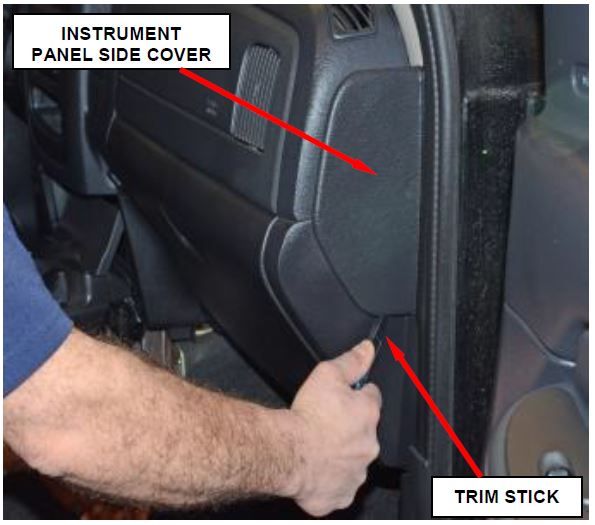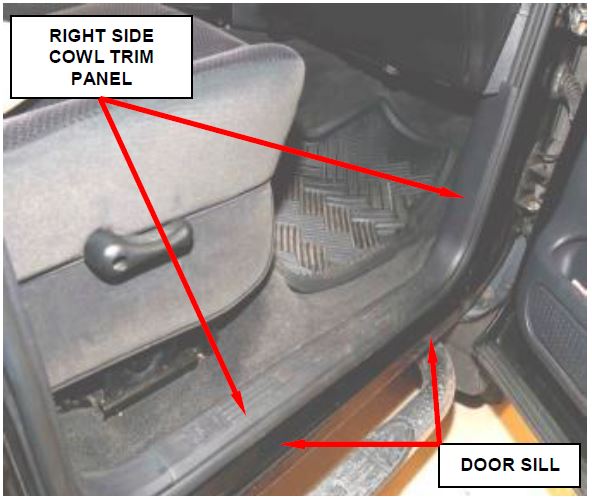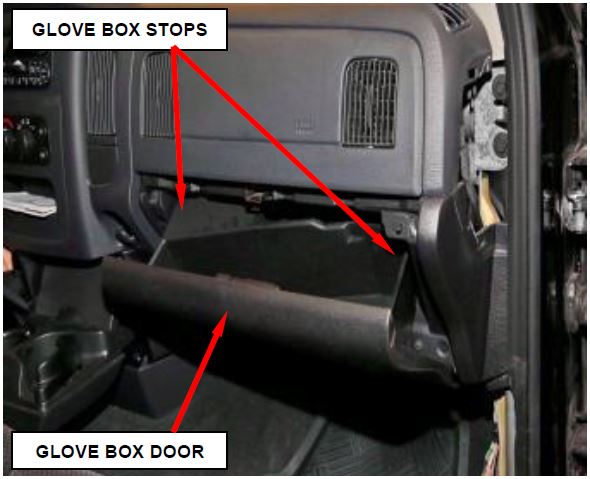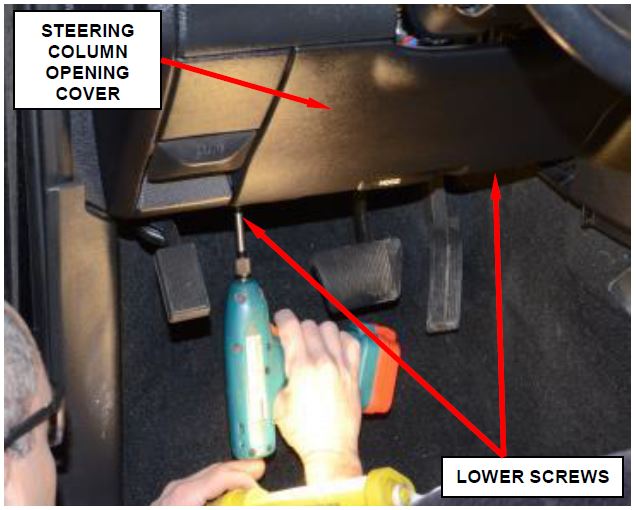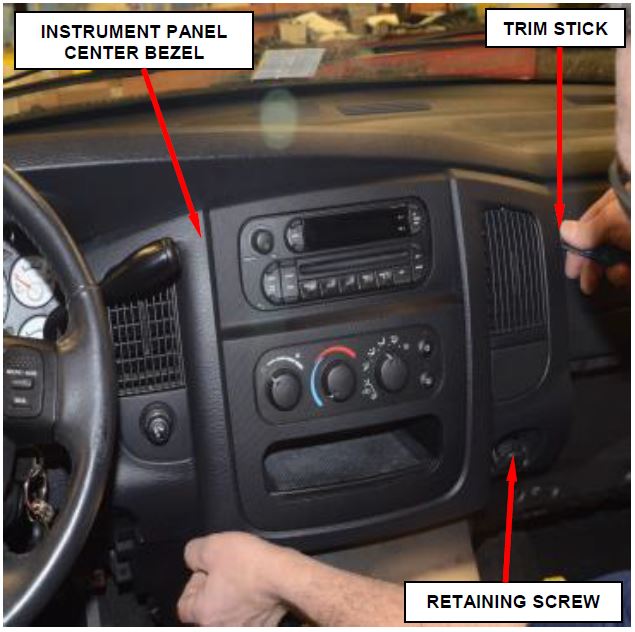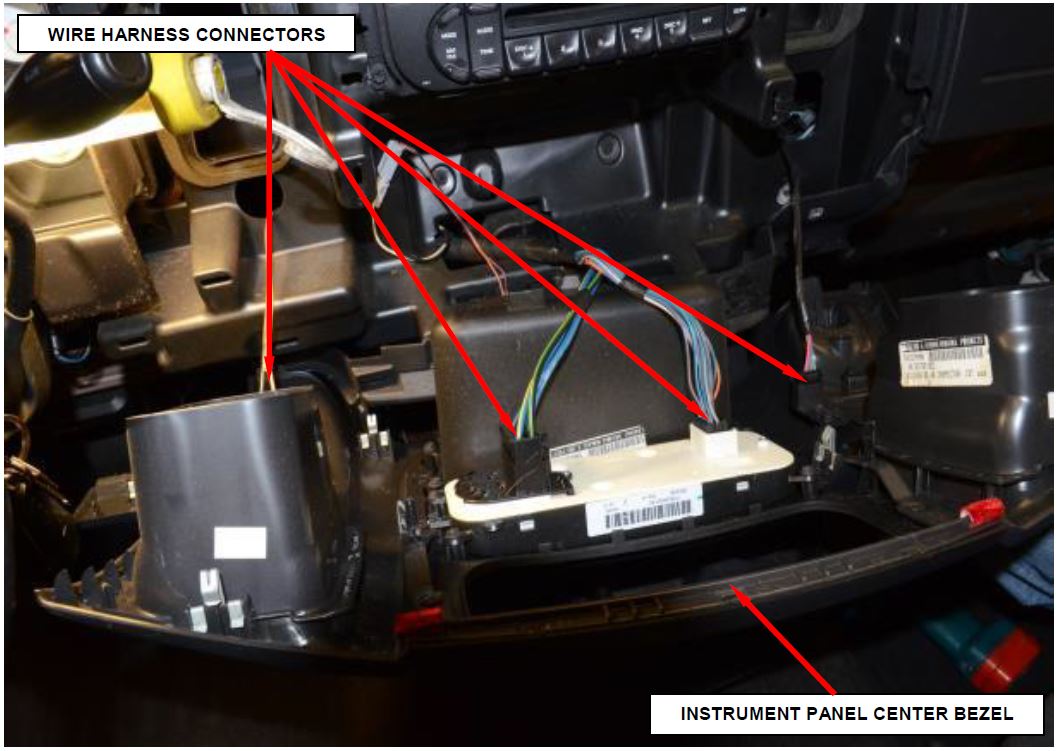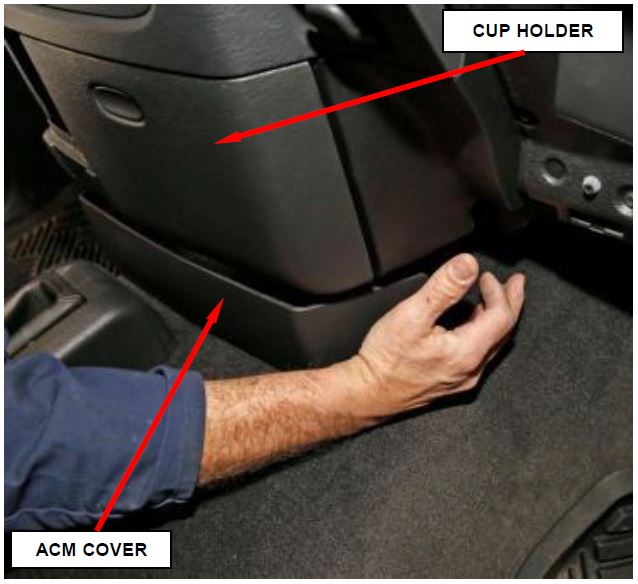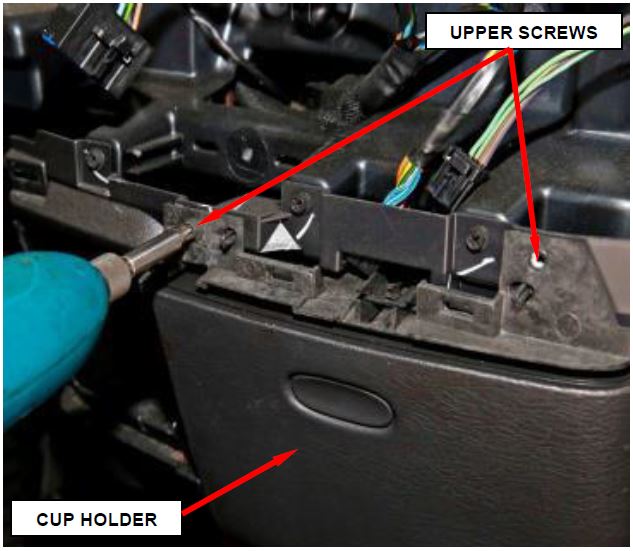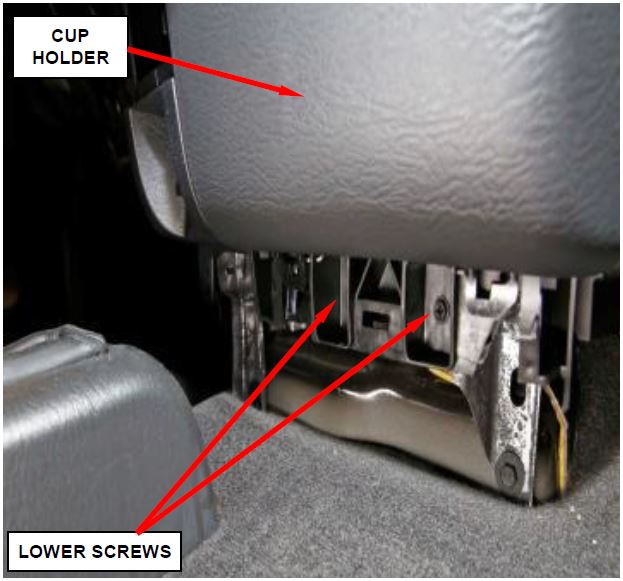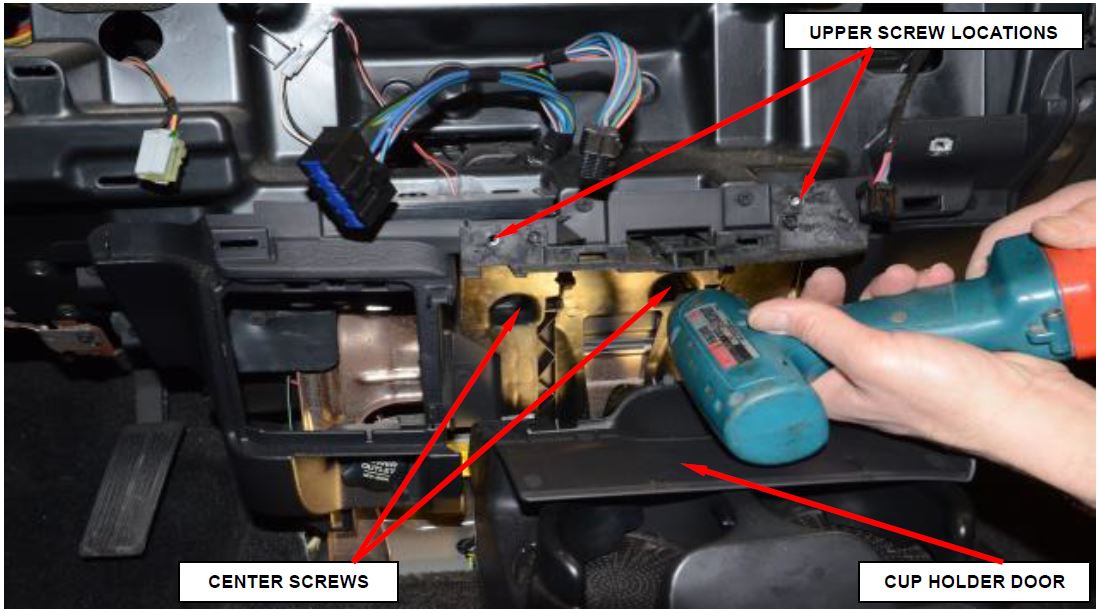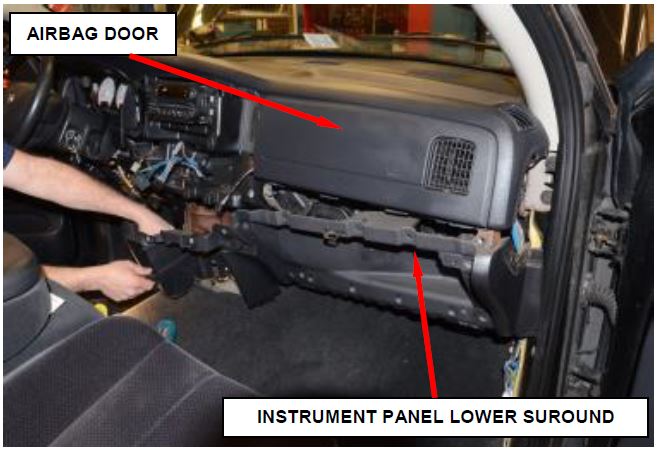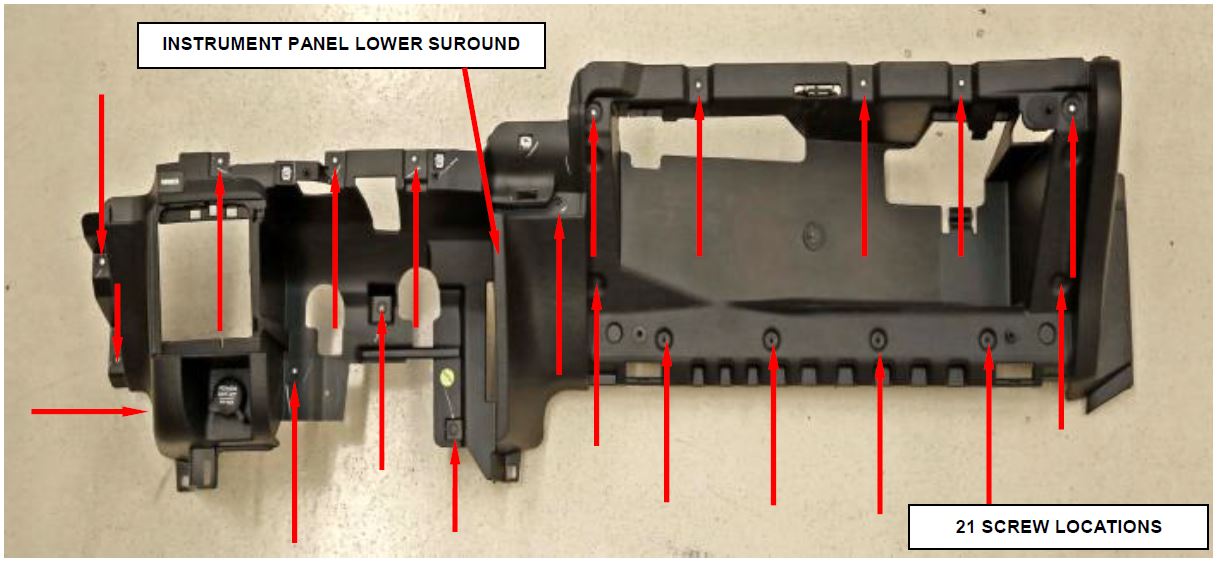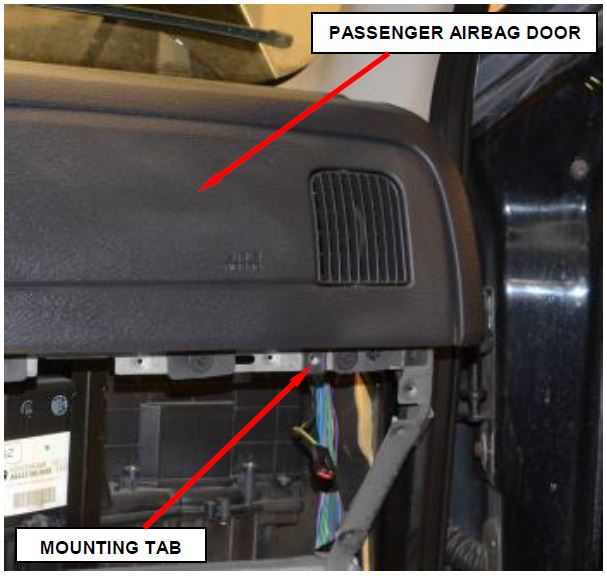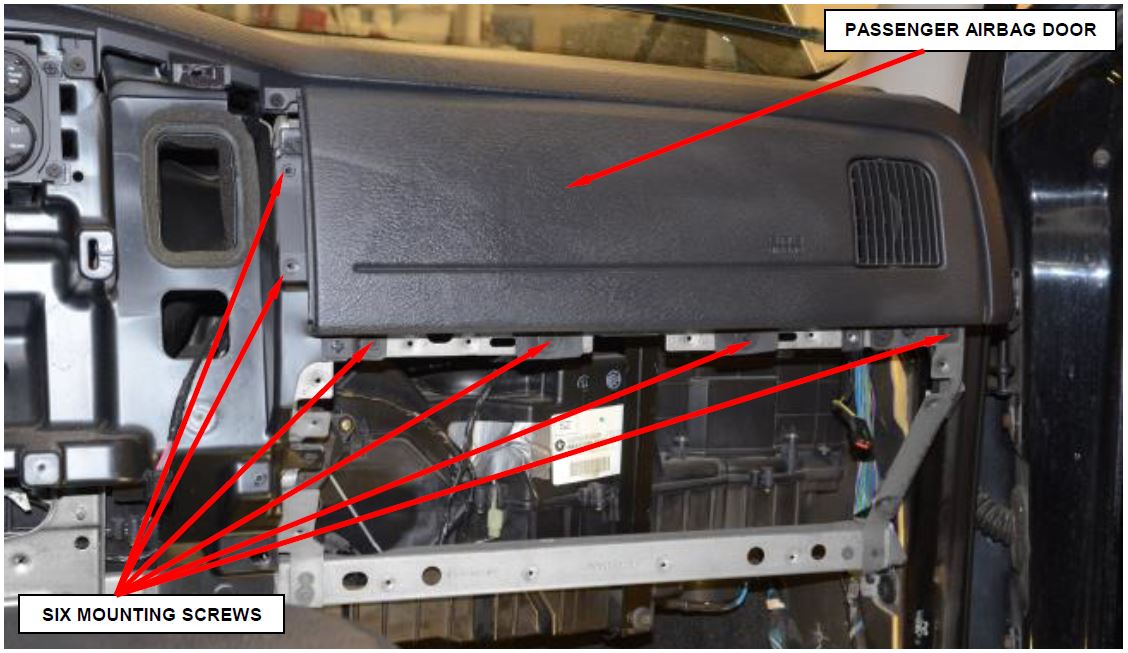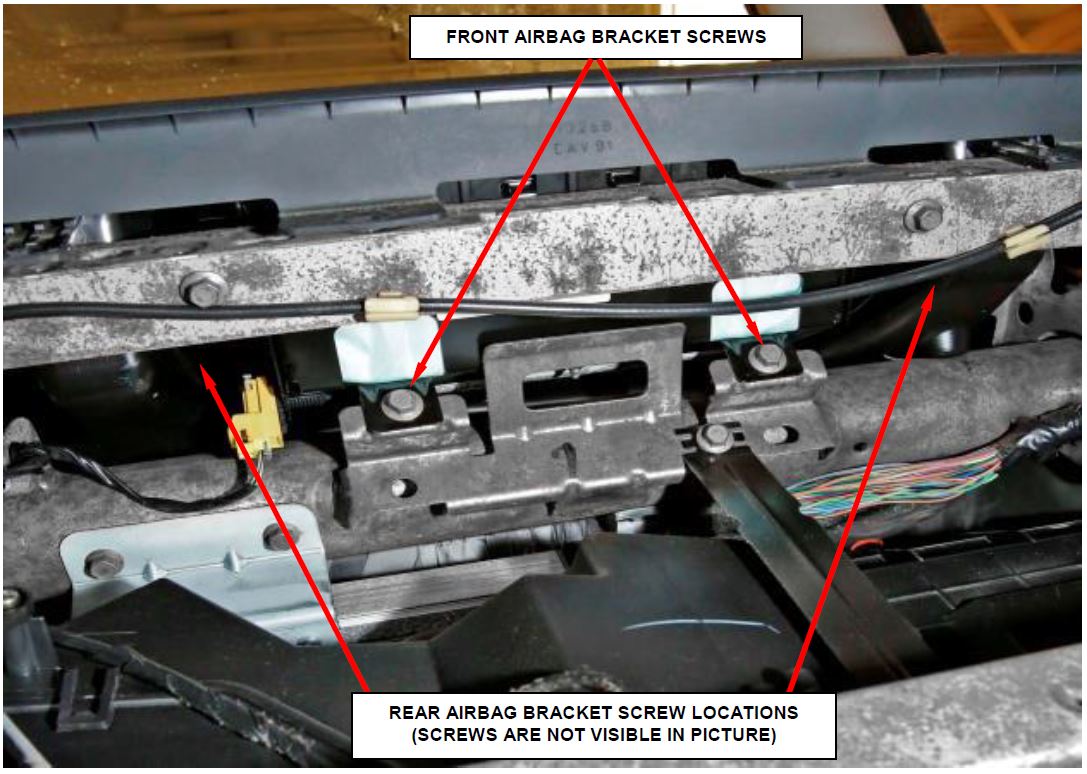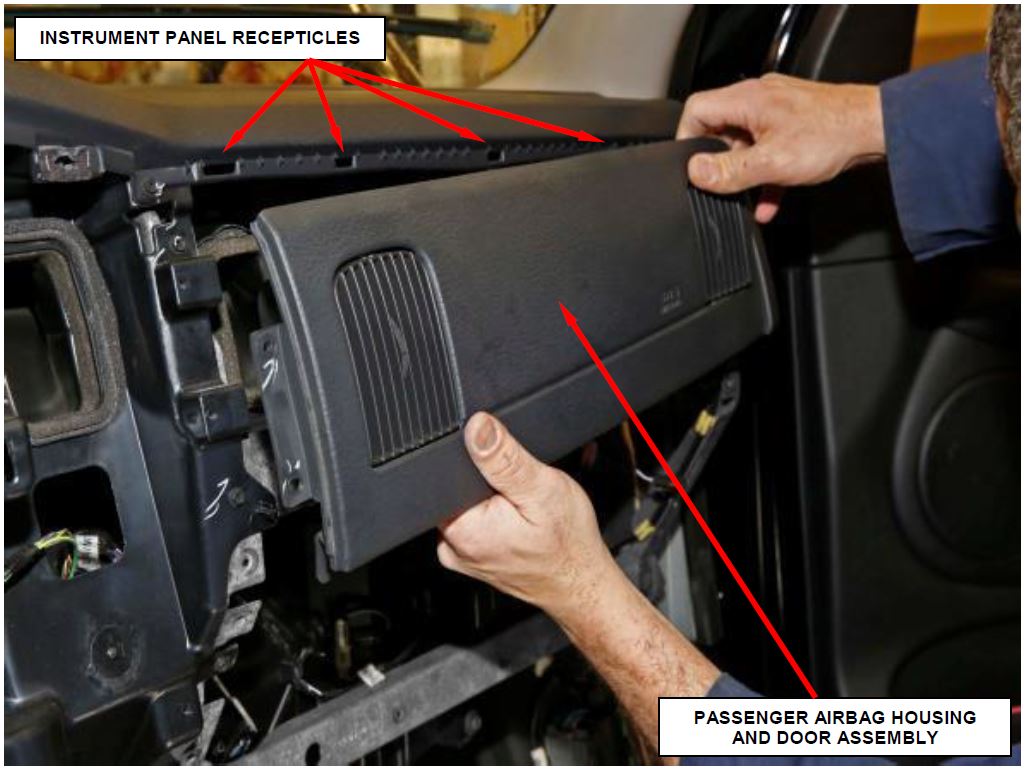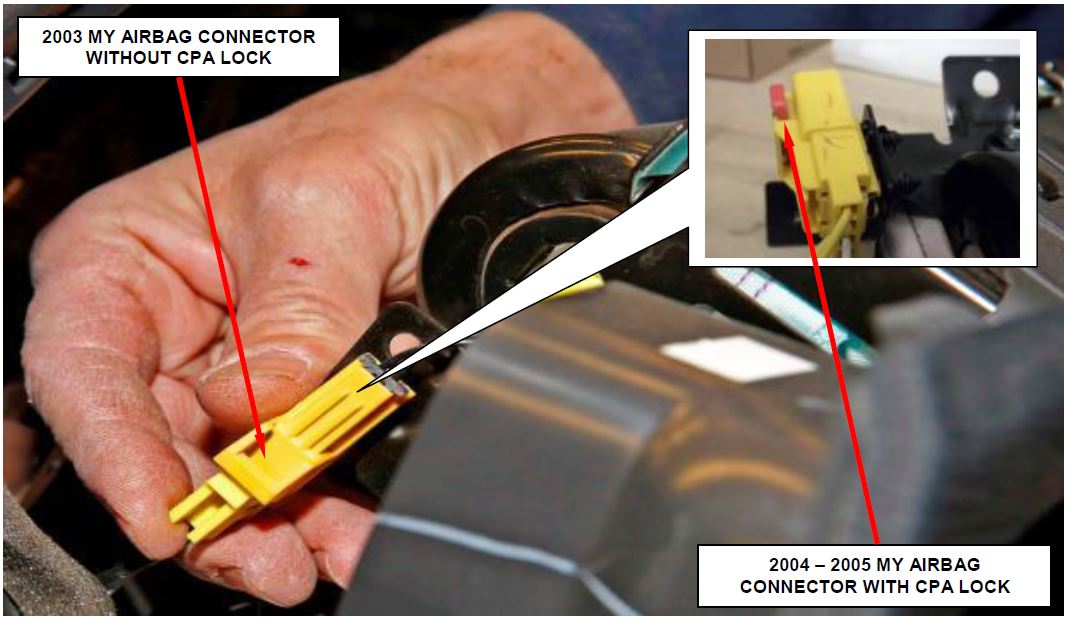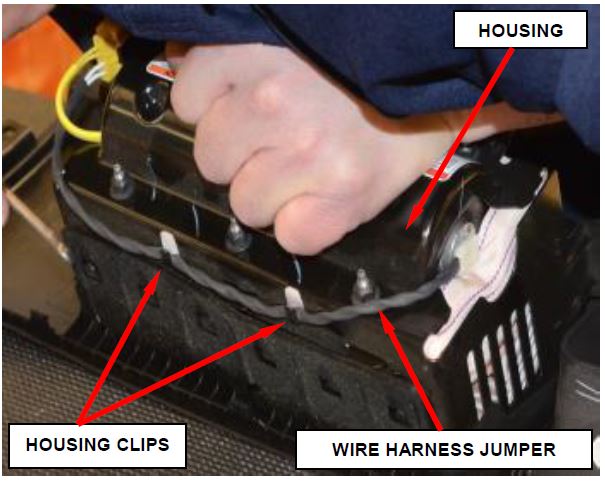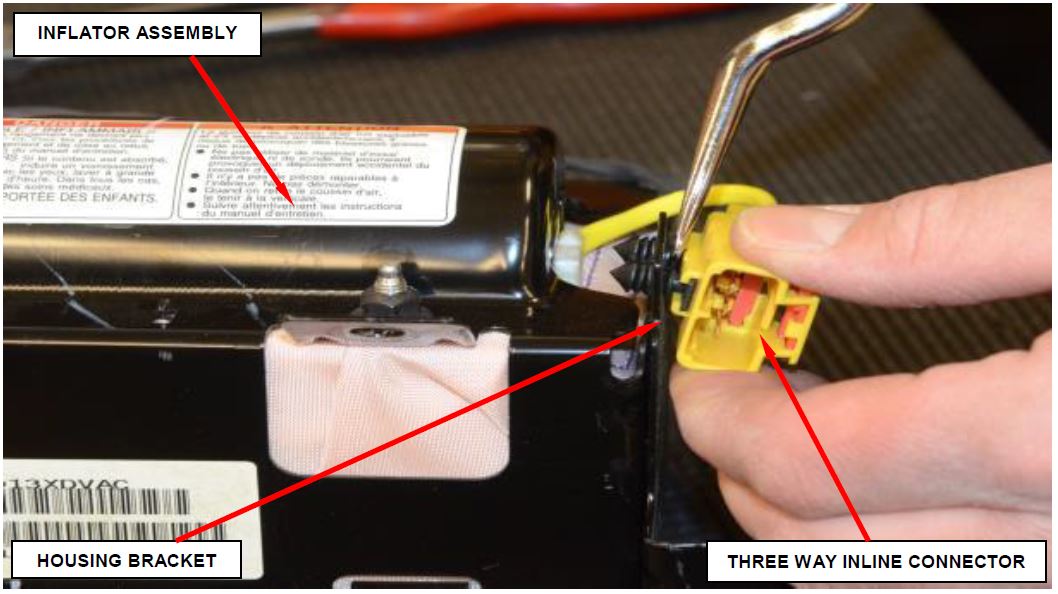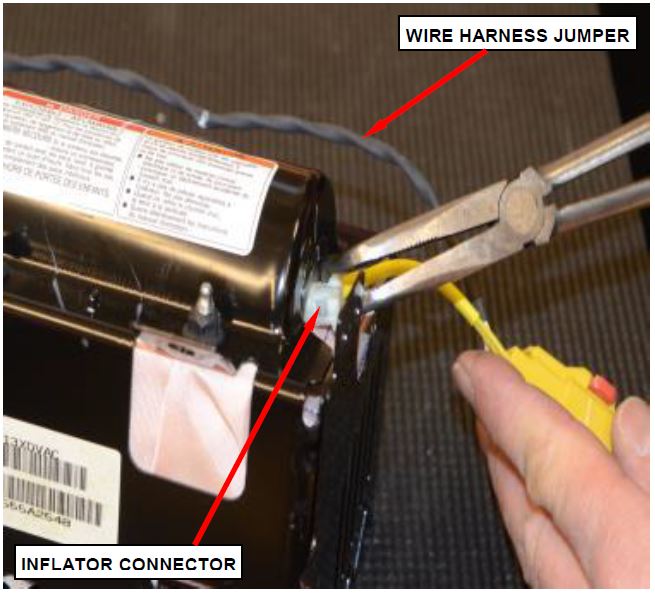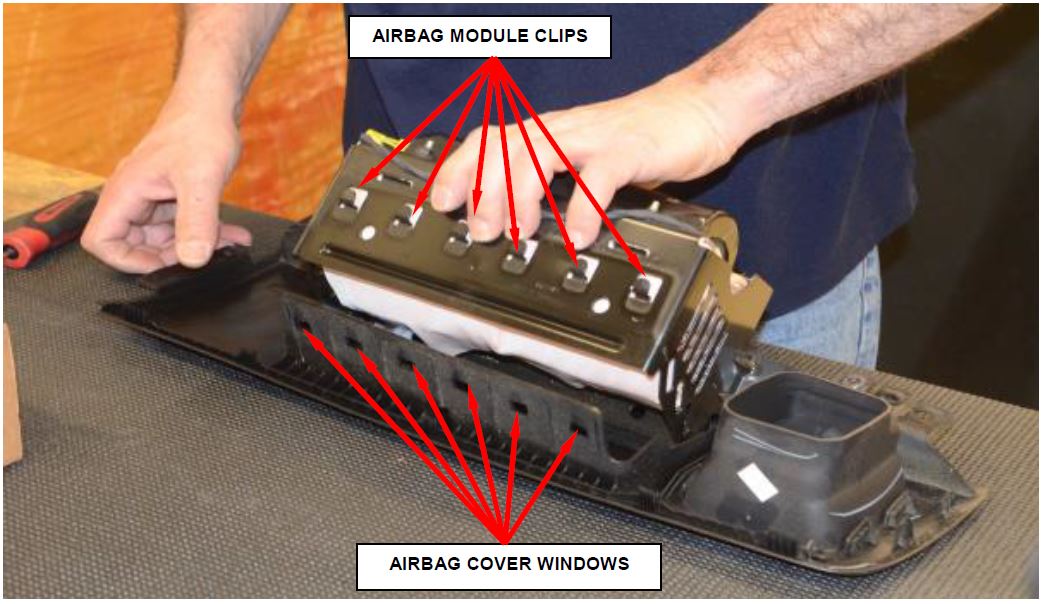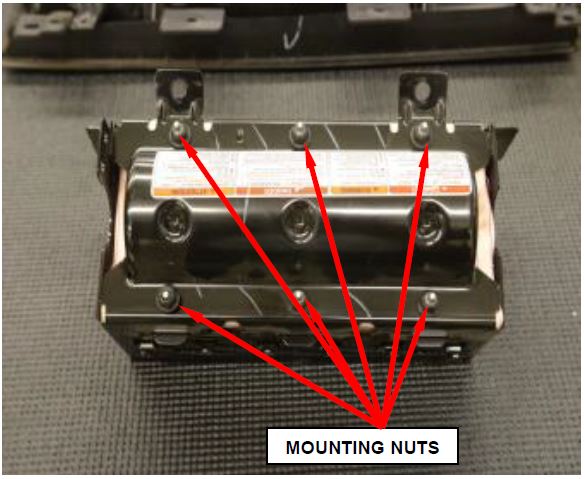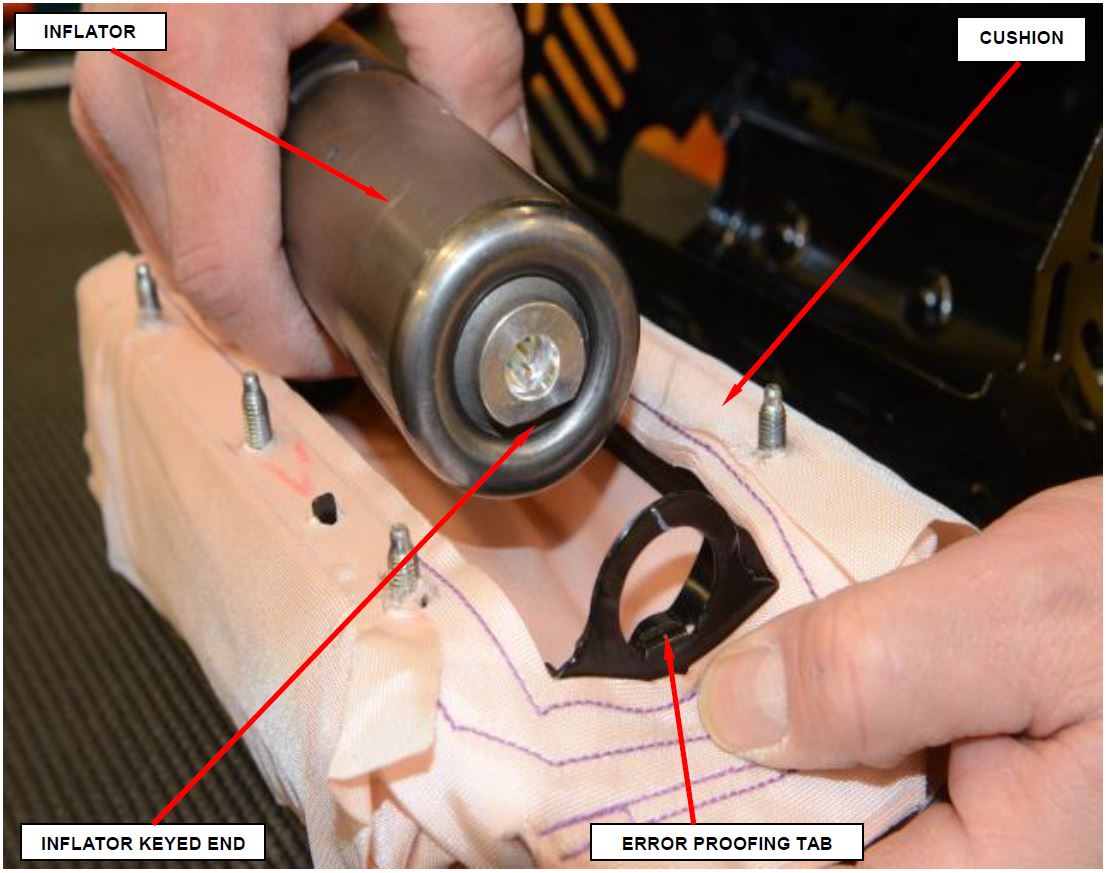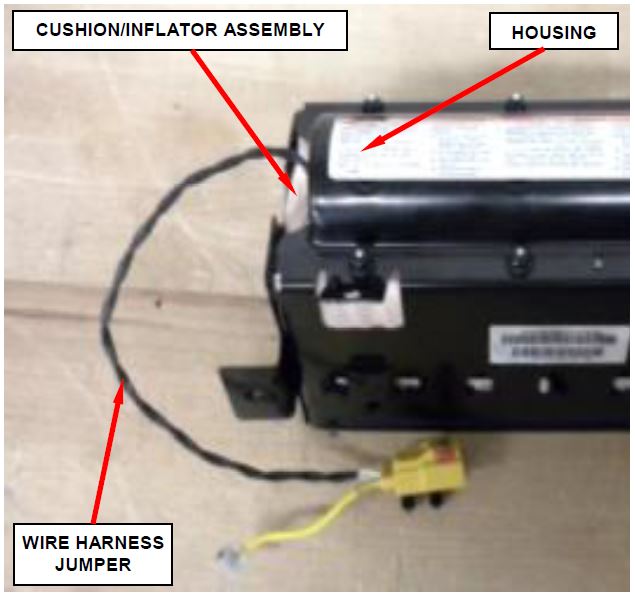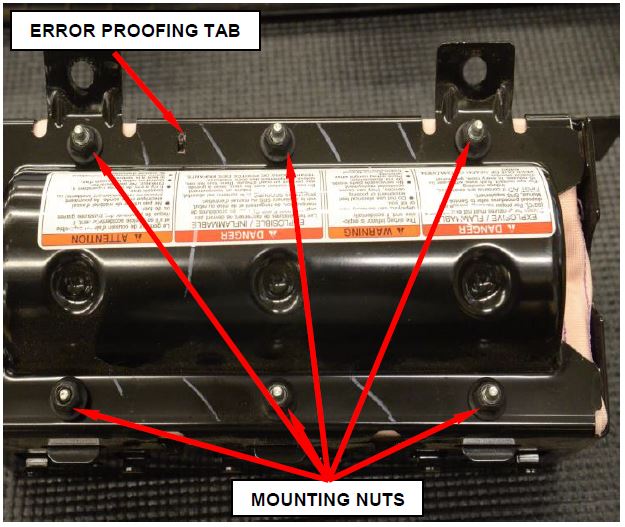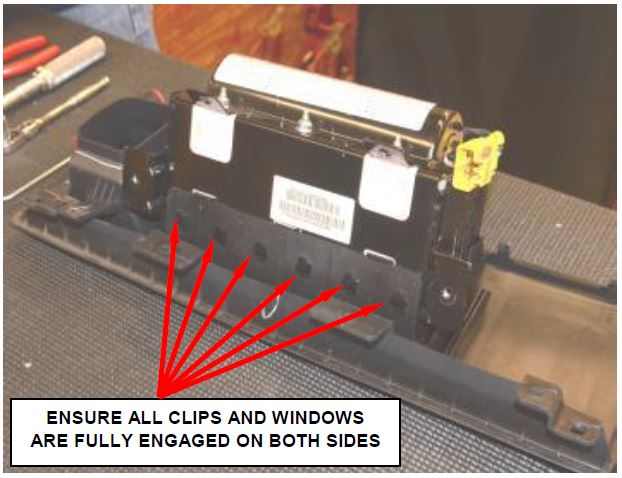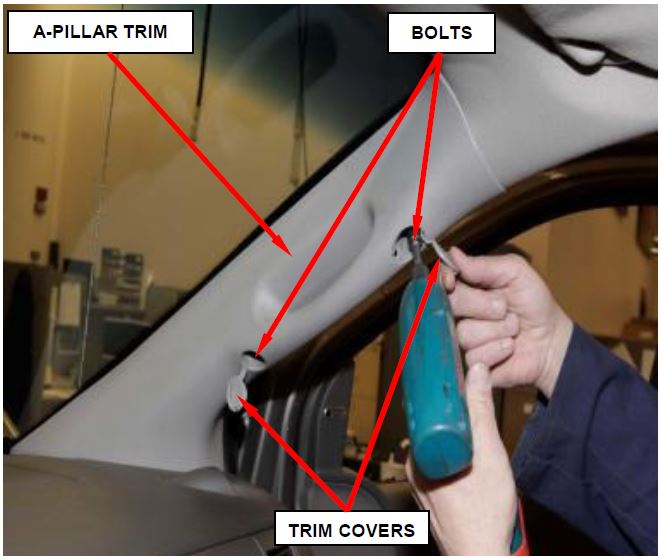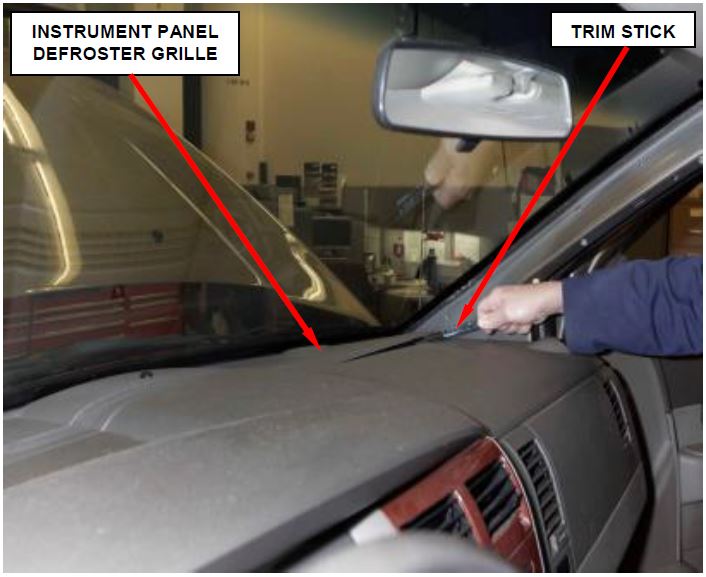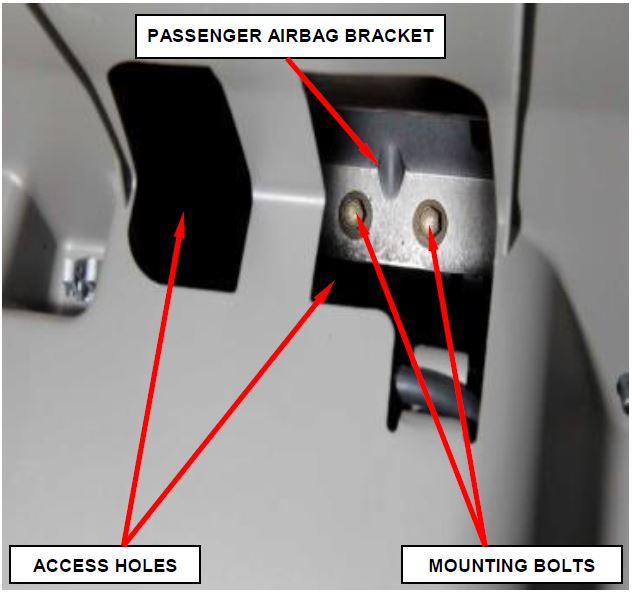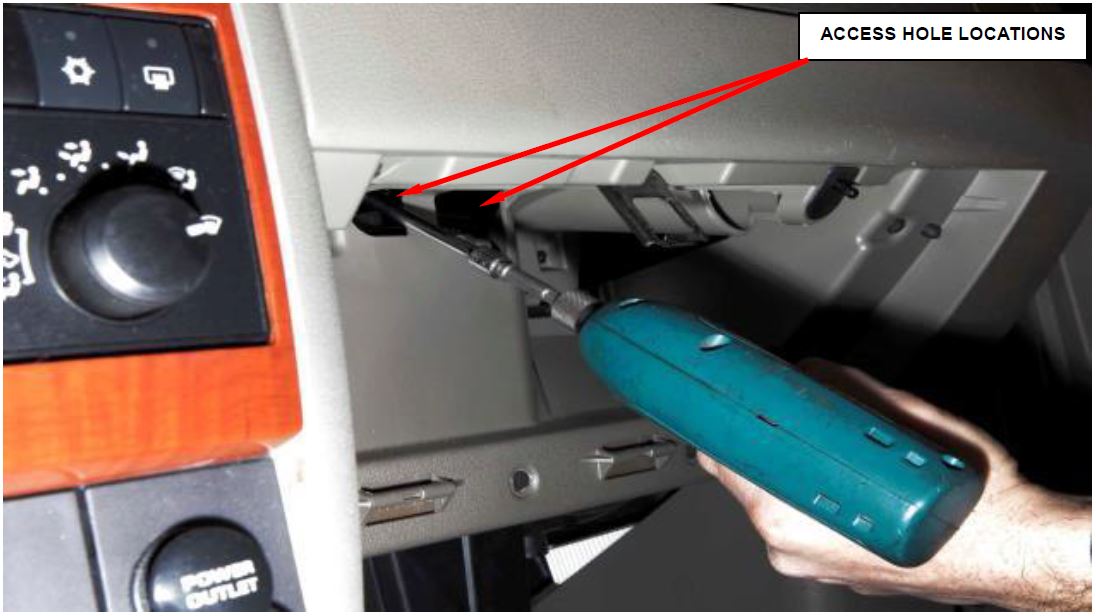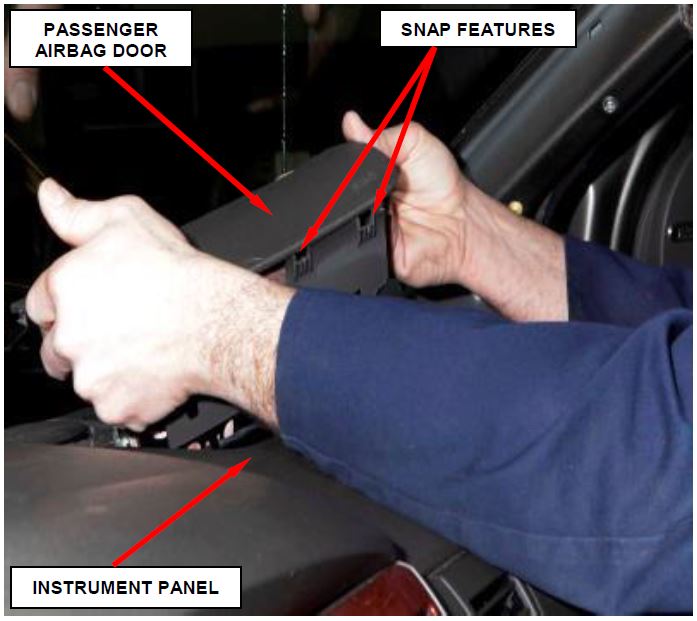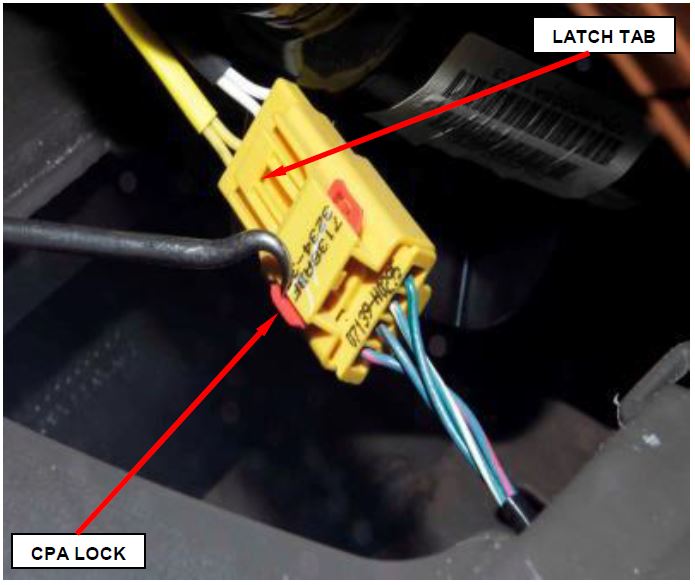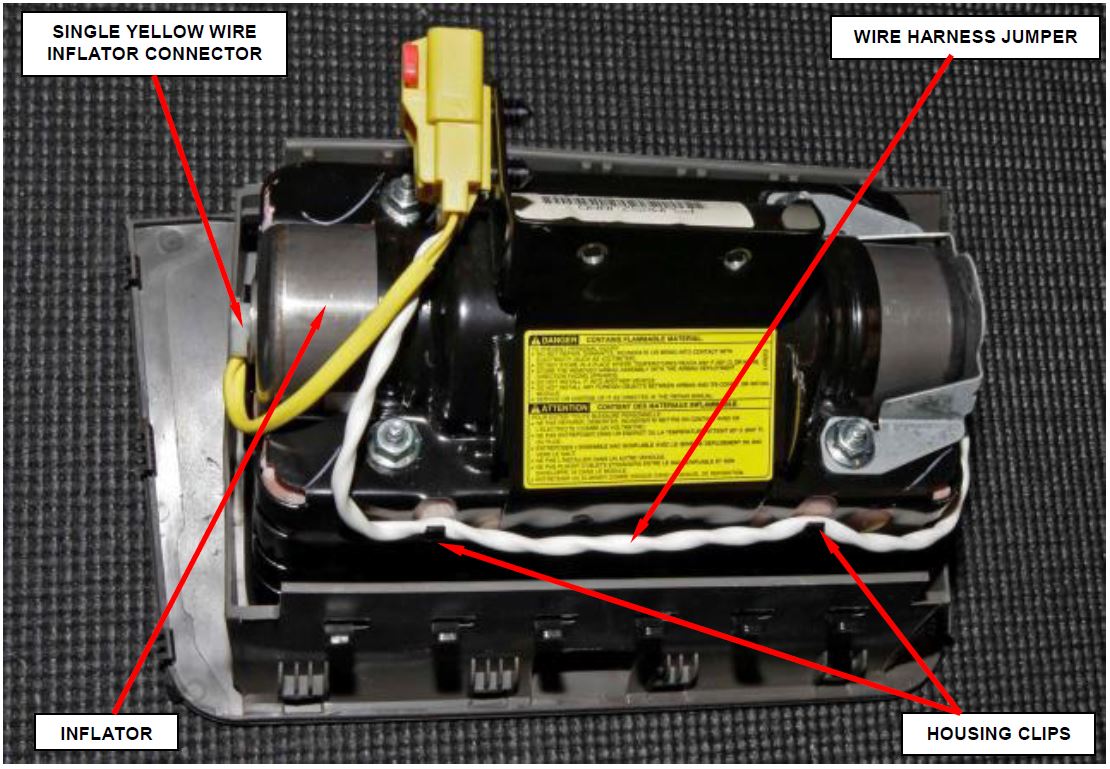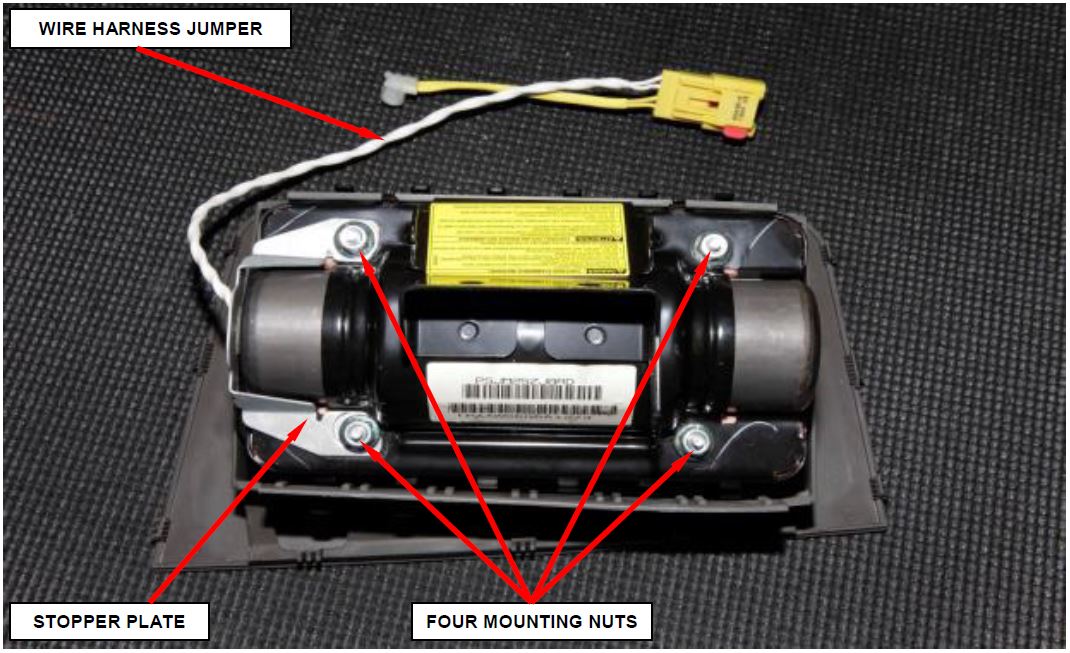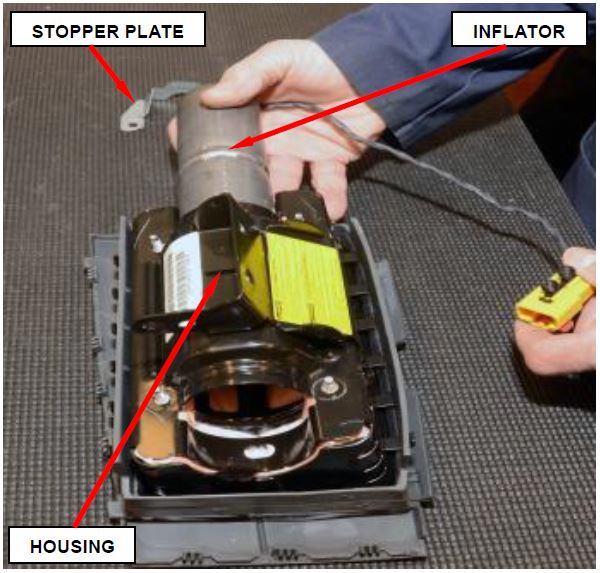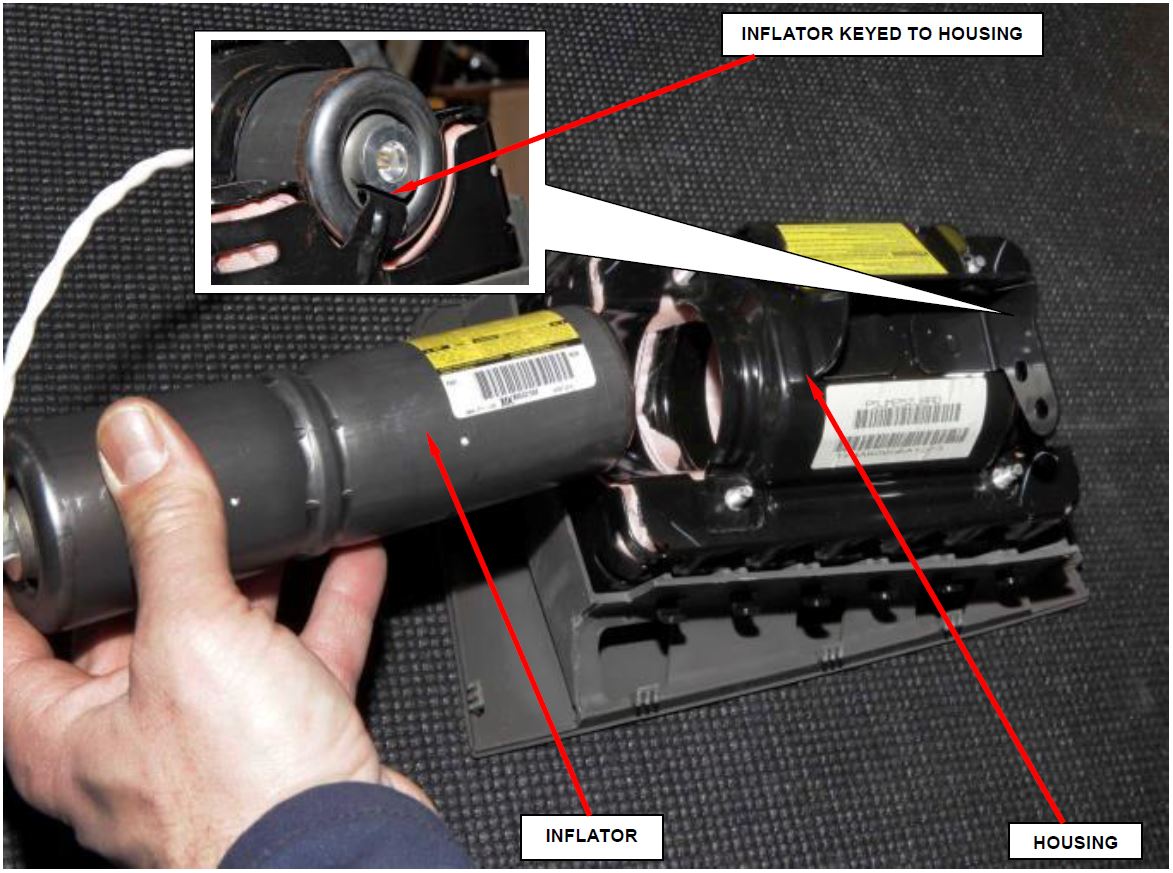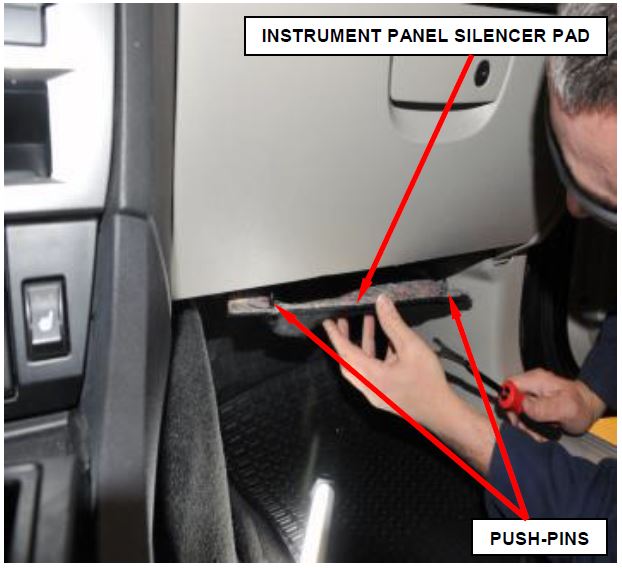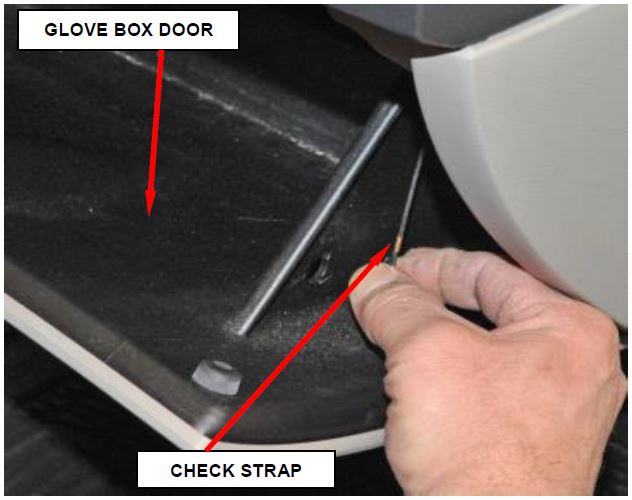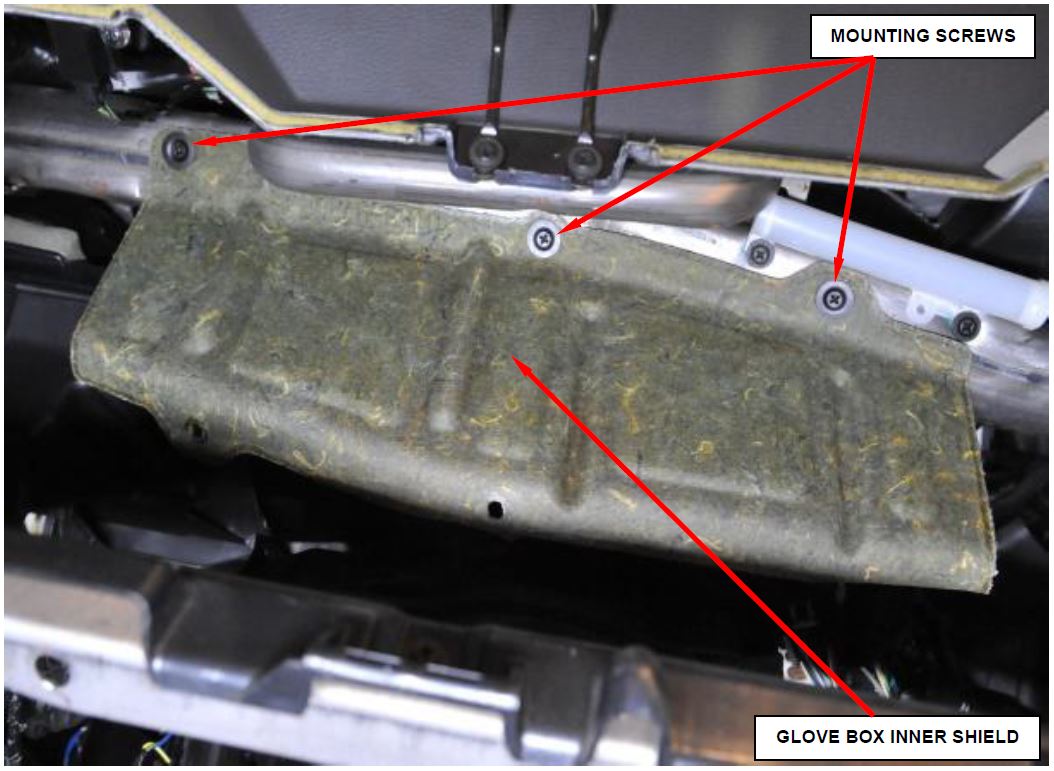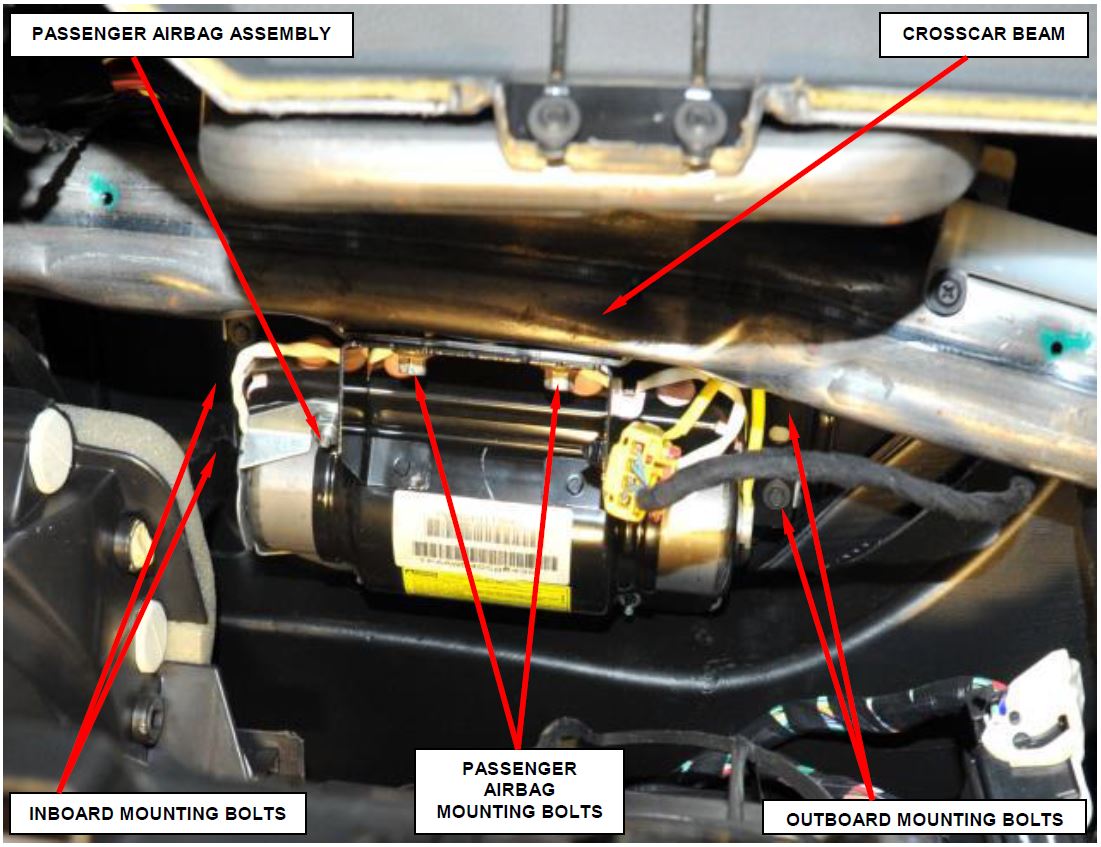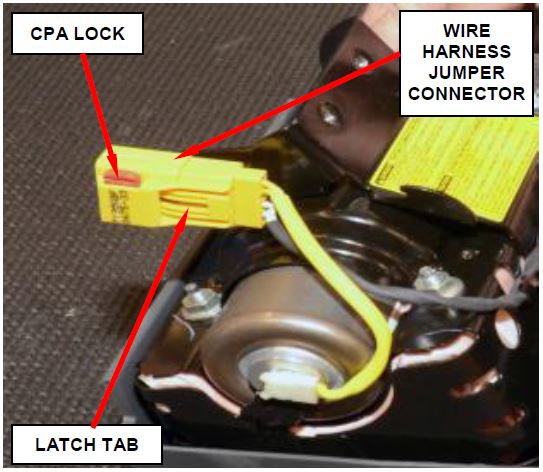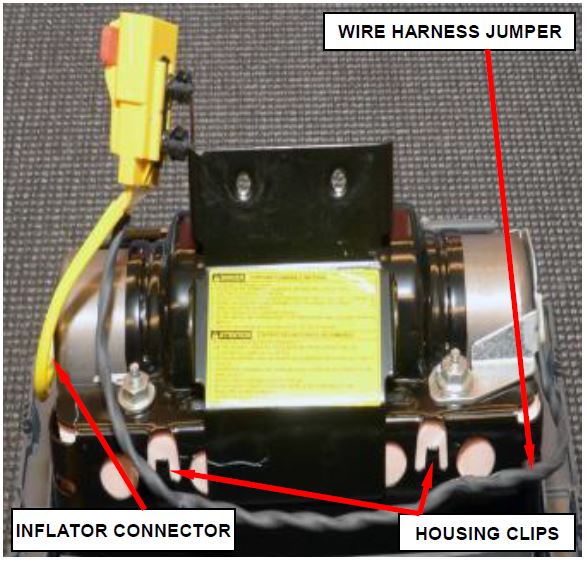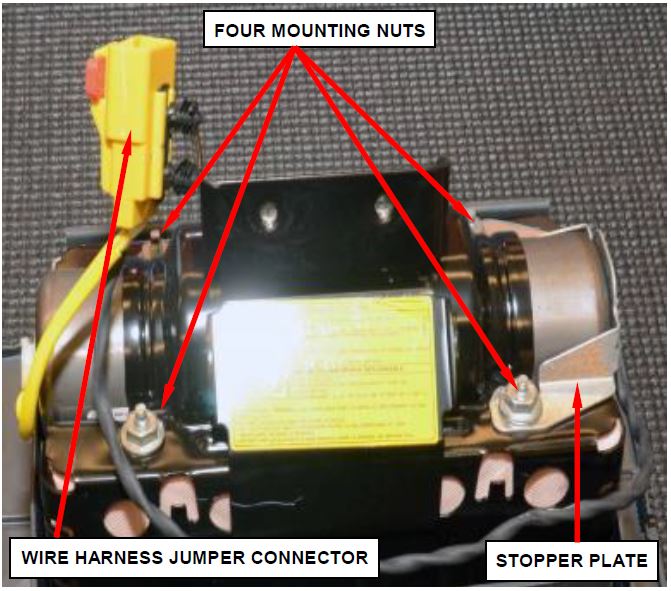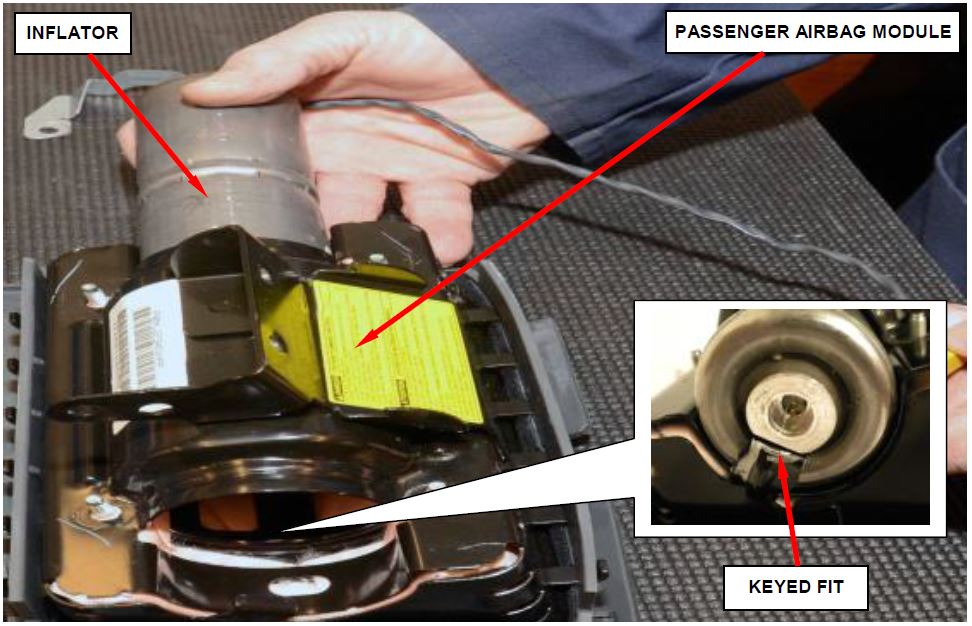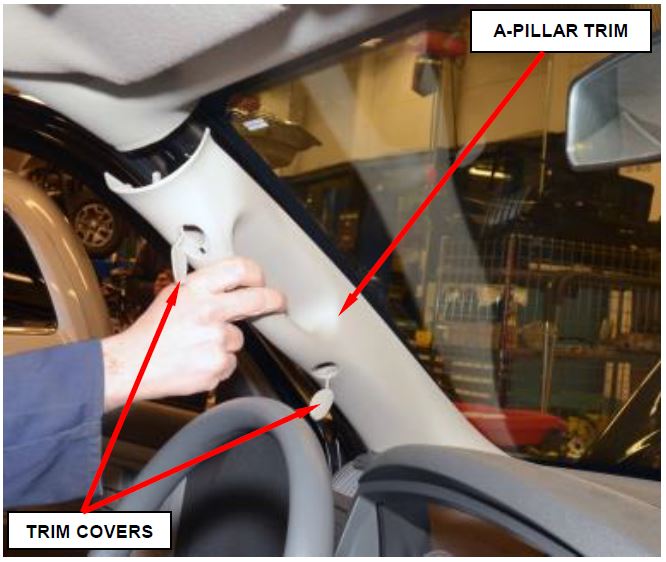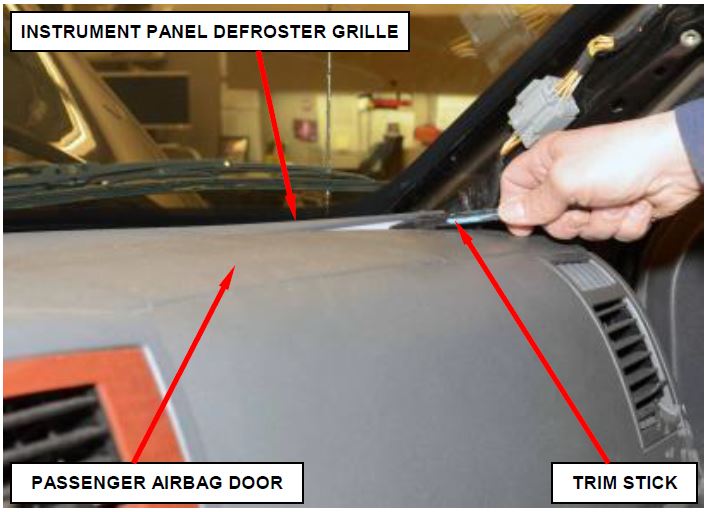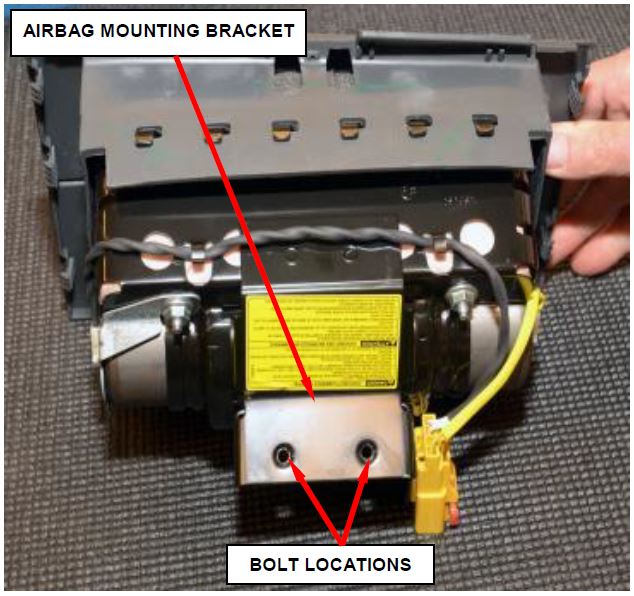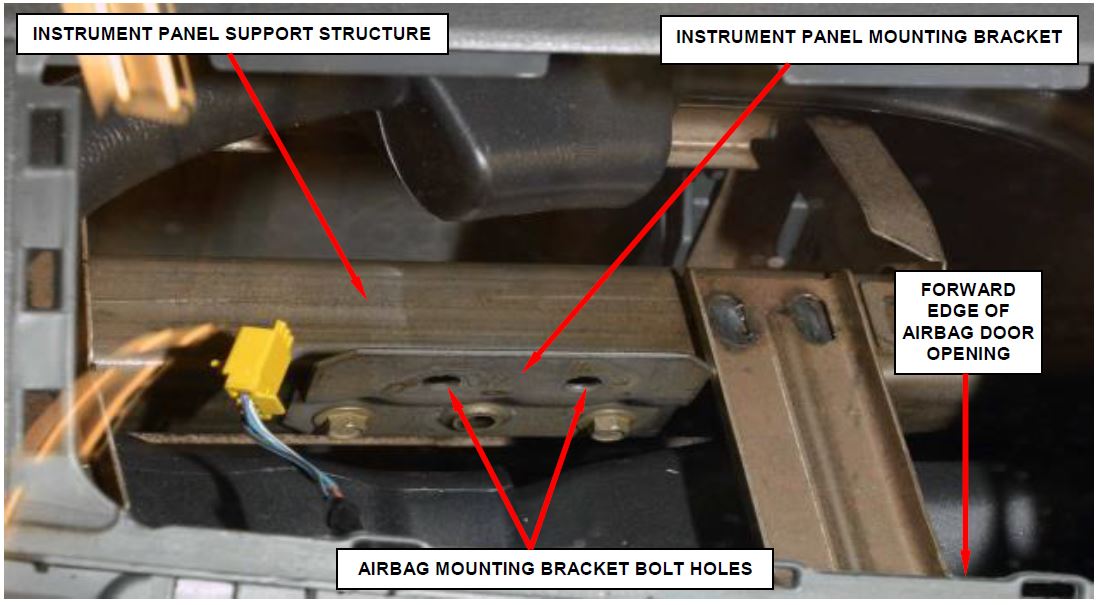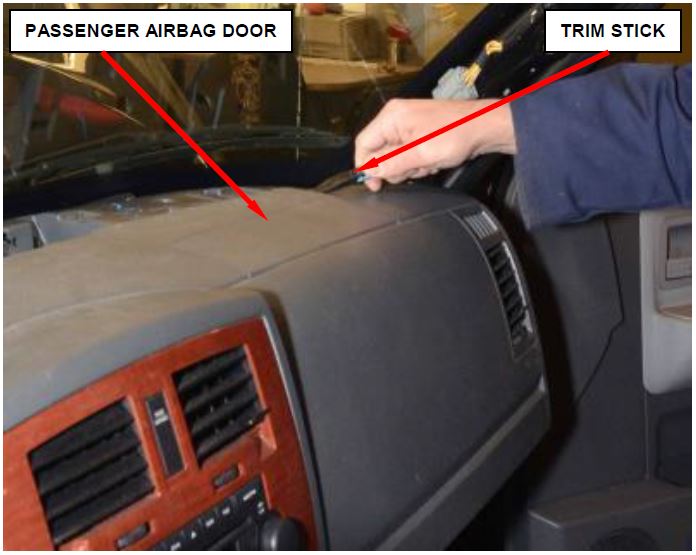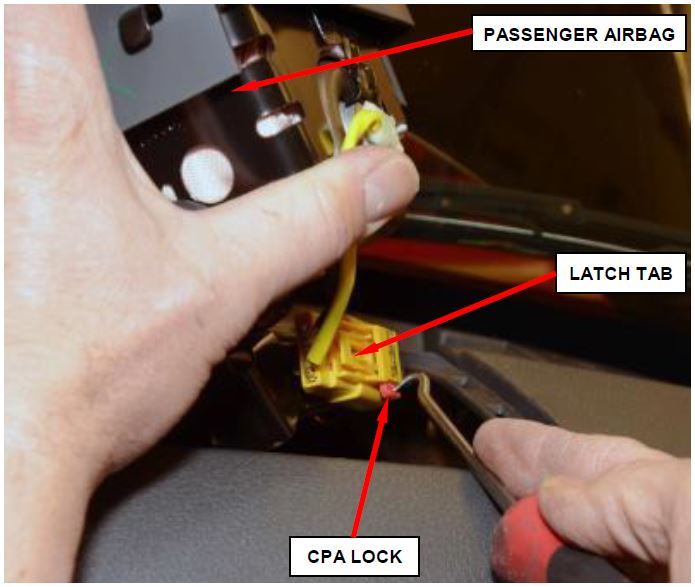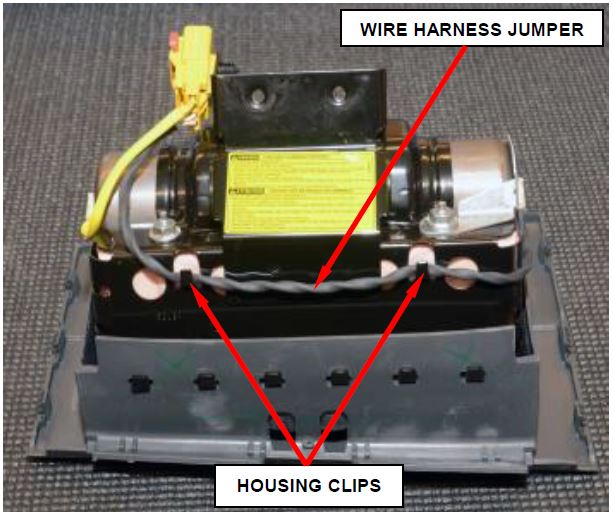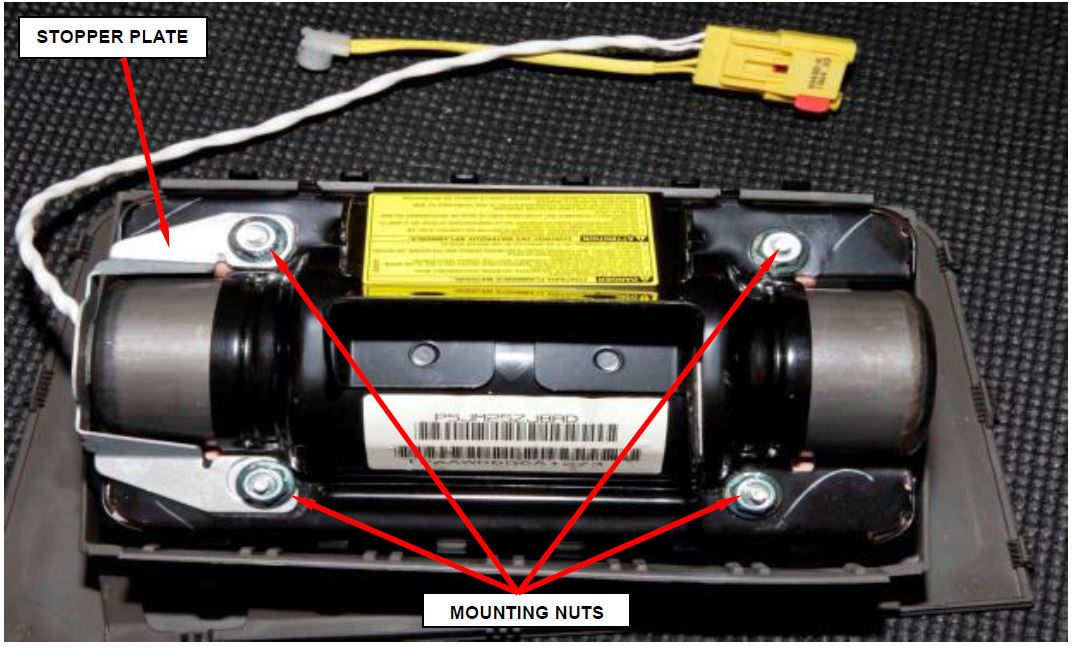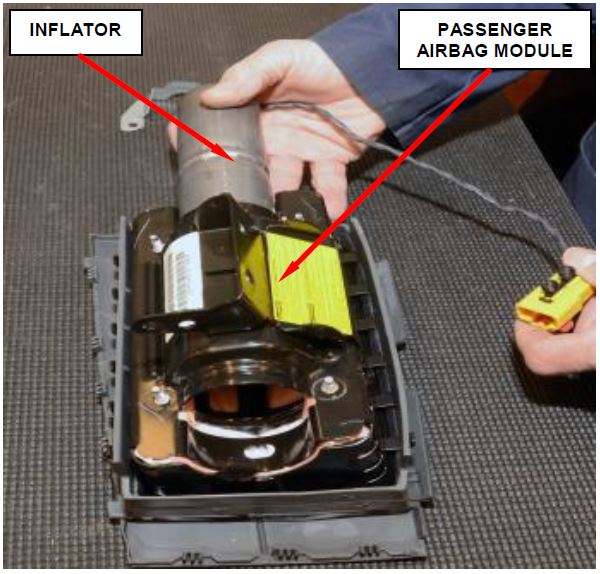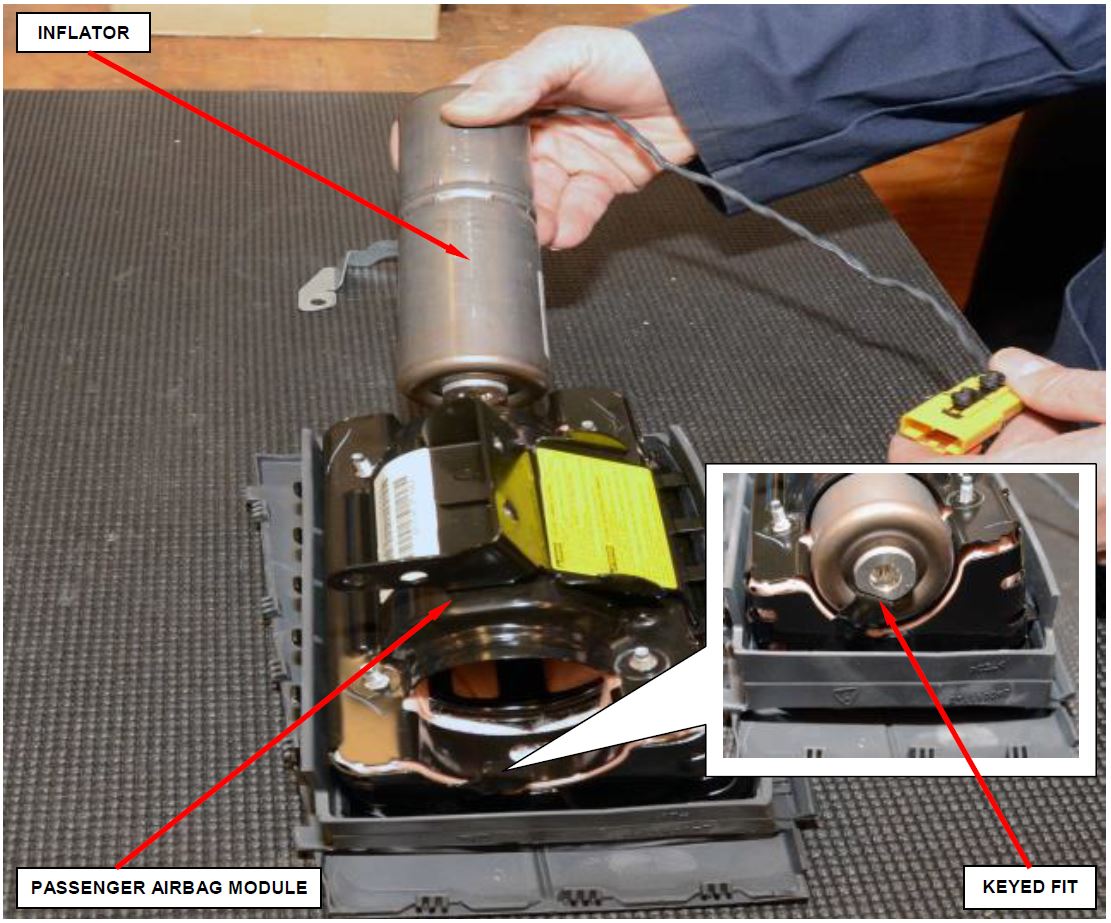| “This site contains affiliate links for which OEMDTC may be compensated” |
NHTSA Campaign Number: 14V770
Manufacturer Chrysler Group LLC
Group LLC
Components AIR BAGS
Potential Number of Units Affected 250,896
Passenger Air Bag Inflator May Rupture
In the event of a crash necessitating deployment of the passenger’s frontal air bag, the inflator could rupture with metal fragments striking the vehicle occupants potentially resulting in serious injury or death.
Summary
Chrysler Group LLC (Chrysler
Group LLC (Chrysler ) is recalling certain model year 2004-2005 Dodge
) is recalling certain model year 2004-2005 Dodge Ram
Ram 1500, 2500, and 3500, 2004-2005 Dodge
1500, 2500, and 3500, 2004-2005 Dodge Durango, 2005 Dodge
Durango, 2005 Dodge Dakota, 2005 Dodge
Dakota, 2005 Dodge Magnum and 2005 Chrysler
Magnum and 2005 Chrysler 300, 300C and 300 SRT8 vehicles originally sold, or ever registered, in geographic locations associated with high absolute humidity.
300, 300C and 300 SRT8 vehicles originally sold, or ever registered, in geographic locations associated with high absolute humidity.
Specifically, vehicles sold, or ever registered, in Alabama, Florida, Georgia, Hawaii, Louisiana, Mississippi, Texas, Puerto Rico, U.S.
Virgin Islands, Saipan, Guam, and American Samoa are addressed by this recall.
Upon deployment of the passenger side frontal air bag, excessive internal pressure may cause the inflator to rupture.
Remedy
Chrysler will notify owners, and dealers will replace the front passenger air bag inflator, free of charge.
will notify owners, and dealers will replace the front passenger air bag inflator, free of charge.
For vehicles that were sold, or are currently registered, in Florida, Puerto Rico, Hawaii, and the U.S. Virgin Islands, owners were notified and the recall began on December 5, 2014.
For all other vehicles, Chrysler notified owners and the recall began on February 3, 2015.
notified owners and the recall began on February 3, 2015.
Owners may contact Chrysler customer service at 1-800-853-1403.
customer service at 1-800-853-1403.
Chrysler ’s number for this recall is P40 Expanded.
’s number for this recall is P40 Expanded.
Note: This recall has been superseded by recall 16V-352.
This recall superseded the passenger air bag portion of recall 14V-354.
Notes
Owners may also contact the National Highway Traffic Safety Administration Vehicle Safety Hotline at 1-888-327-4236 (TTY 1-800-424-9153), or go to www.safercar.gov.
Check if your Vehicle has a Recall
Revised March 2016
Dealer Service Instructions for:
Safety Recall P78 / NHTSA 14V-770 Passenger Airbag Inflator
NOTE: Revised 2004-2005 DR build dates.
NOTE: Removed 2003 DR model and relevant service instruction steps from this Safety Recall. 2003 DR model vehicles are now covered under FCA US safety recall R26. Separate dealer instructions will be provided for R26.
Models
NOTE: This recall applies only to the above vehicles built from May 08, 2003 through July 31, 2004 (MDH 050809 through 073101).
NOTE: This recall applies only to the above vehicles built from April 26, 2004 through July 31, 2004 (MDH 042607 through 073101).
| 2004-2005 | (HB) | Dodge Durango Durango |
NOTE: This recall applies only to the above vehicles built from July 21, 2003 through July 15, 2004 (MDH 072107 through 071508).
NOTE: This recall applies only to the above vehicles built from January 5, 2004 through July 31, 2004 (MDH 010506 through 073123).
| 2005 | (ND) | Dodge Dakota Dakota |
NOTE: This recall applies only to the above vehicles built from April30, 2004 through July 30, 2004 (MDH 043007 through 073022).
| IMPORTANT: Some of the involved vehicles may be in dealer used vehicle inventory. Dealers should complete this recall service on these vehicles before retail delivery. Dealers should also perform this recall on vehicles in for service.Involved vehicles can be determined by using the VIP inquiry process. |
Subject
The passenger airbag inflator housing on about 250,000 of the above vehicles may rupture, due to excessive internal pressure, during normal airbag deployment events. This condition is more likely to occur if your vehicle has been exposed to high levels of absolute humidity for extended periods of time. Excessive internal pressure, during airbag deployment events, could result in an increased chance of occupant injury during certain crash conditions.
Repair
The passenger airbag inflator must be replaced.
Parts Information
NOTE: Do not destroy the original airbag packaging, it will be used to return the original inflator to the supplier.
NOTE: See chart on page 4 for model year and model applicability.
| Part Number | Description |
| CBEZP404AA | Inflator Kit, Passenger Airbag |
| Each kit contains the following components: | |
| Quantity | Description |
| 1 | Inflator (with Wire Harness Jumper) |
| 6 | Nut, Mounting |
| Part Number | Description |
| CBCZP405AA | Inflator Kit, Passenger Airbag |
| Each kit contains the following components: | |
| Quantity | Description |
| 1 | Inflator (with Wire Harness Jumper) |
| 4 | Nut, Mounting |
NOTE: Dealers should determine which inflator package is required for each vehicle at the time appointments are scheduled to assure that the correct part is available when the customer arrives. The inflator package for the vehicle to be serviced may be determined by:
Inflator Kit Usage Chart
PAB = Passenger Airbag Part Number
P/N = Part Number
NR = Not Required
| Model | AIRBAG MODULE | 2004 Model Year | 2005 Model Year |
| DR | PAB P/N | CBEZP404AA | CBEZP404AA |
| DH | PAB P/N | NR | CBEZP404AA |
| HB | PAB P/N | CBCZP405AA | CBCZP405AA |
| LX | PAB P/N | NR | CBCZP405AA |
| ND | PAB P/N | NR | CBCZP405AA |
Each dealer to whom vehicles in the recall were assigned will receive an initial shipment of Inflator Packages to service a small quantity of vehicles.
Parts Return
Use the procedure on the next page to package the original inflator in the replacement kit box and return. Shipping/return instructions are provided with each inflator kit.
International (including Mexico and Canada), Hawaii, Alaska, Puerto Rico, and US Virgin Islands dealers CANNOT follow below shipping instructions. Instead, dealerships in these locations MUST contact the following Takata/Menlo USA representative directly for shipping instructions:
Miguel Prigadaa – Tel #: 210-250-5078 or
Email: MLGTakataRestraints_International@menloworldwide.com.
 Loading...
Loading...
Special Tools
The following special tools are required to perform this repair:
| wiTECH VCI Pod Kit |
| Laptop Computer |
| wiTECH Software |
Service Procedure
A. Replace Passenger Airbag Inflator
- For 2003 through 2004 and 2005 DR and 2005 DH model vehicles, continue with Section B. Replace Passenger Airbag Inflator – DR, DH
- For 2004 through 2005 HB model vehicles, continue with Section C. Replace Passenger Airbag Inflator – HB
- For 2005 LX model vehicles, continue with Section D. Replace Passenger Airbag Inflator – LX
- For 2005 ND model vehicles, continue with Section E. Replace Passenger Airbag Inflator – ND
B. Replace Passenger Airbag Inflator – DR, DH
WARNING: To avoid serious or fatal injury on vehicles equipped with airbags, disable the Supplemental Restraint System (SRS) before attempting any steering wheel, steering column, airbag, seat belt tensioner, impact sensor or instrument panel component diagnosis or service. Disconnect and isolate the battery negative (ground) cable, then wait two minutes for the system capacitor to discharge before performing further diagnosis or service. This is the only sure way to disable the SRS.
Failure to take the proper precautions could result in accidental airbag deployment. At no time should any source of electricity be permitted near the inflator on the back of a non-deployed airbag or seat belt tensioner.
When carrying a non-deployed airbag, the trim cover or airbag cushion side of the unit should be pointed away from the body to minimize injury in the event of an accidental deployment.
- Disconnect and isolate the battery negative cable(s). Wait two minutes for the system capacitor to discharge before further service.
- Using a trim stick, from the notch on the bottom, remove the right instrument panel side cover (Figure 1).
Figure 1 – Instrument Panel Side Cover
- Use the following steps to remove the right side cowl trim panel.
a. Using a trim stick, disengage the retaining tabs of the cowl trim panel from the retainer clips in the door sill (Figure 2).
b. Pull the cowl trim panel rearward and remove it from the vehicle.
Figure 2 – Right Side Cowl Trim Panel
- Use the following steps to remove the glove box:
a. Remove and save the glove box contents.
b. Release the two glove box stops and lower the glove box downward past the stops (Figure 3).
c. Disengage the glove box hinges from the instrument panel and remove the glove box.
Figure 3 – Glove Box
- Use the following steps to remove the center bezel.
a. Remove the two lower screws from the steering column opening cover then release the two retainer clips that secure the top of the steering column opening cover to the instrument panel and remove the cover (Figure 4).
b. Open the ashtray and the cup holder.
Figure 4 – Steering Column Opening Cover
c. Remove and save the retaining screw that secures the instrument panel center bezel to the instrument panel (Figure 5).
d. Using a trim stick, disengage the retainer clips that secure the instrument panel center bezel to the instrument panel (Figure 5).
Figure 5 – Instrument Panel Center Bezel
Figure 6 – Center Bezel Wire Harness Connectors
e. Disconnect the wire harness connectors and remove the instrument panel center bezel from the vehicle (Figure 6).
- If the vehicle is equipped with a cup holder, continue with Step 6.
- If the vehicle is equipped with a storage bin, continue with Step 7.
NOTE: A storage bin replaces the cup holder in the instrument panel when the vehicle is equipped with a floor console and manual transmission.
- Use the following steps to remove the cup holder, if equipped:
a. Remove the Airbag Control Module (ACM) cover using a trim stick or another suitable wide flat-bladed tool. Gently pry each side of the ACM cover away from the instrument panel at each side of the center bracket on the floor panel transmission tunnel far enough to disengage the two snap clip retainers from the instrument panel receptacles (Figure 7).
Figure 7 – Airbag Control Module (ACM) Cover
b. Remove and save the two upper screws that secure the cup holder to the instrument panel (Figure 8).
Figure 8 – Upper Cup Holder Screws
c. Remove and save the two lower screws that secure the cup holder to the instrument panel (Figure 9).
d. Open the cup holder and cup holder door then remove and save the two center screws that secure the cup holder to the instrument panel (Figure 10).
e. Remove the cup holder from the vehicle and continue with Step 8.
Figure 9 – Lower Cup Holder Screws
Figure 10 – Center Cup Holder Screws
- Use the following steps to remove the storage bin, if equipped with a manual transmission.
a. Remove the 4WD gear shift boot, if equipped.
b. Remove the transmission gear shift lever extension, if equipped with a manual transmission.
c. Using a trim stick, disengage the retaining tabs that secure the manual transmission gear shift boot or storage bin (depending on application) to the floor console and remove the boot or storage bin.
d. Remove the three inserts from the floor console.
e. Remove and save the three bolts that secure the floor console to the floor panel.
f. Lift up the rear of the floor console to clear the gear shift lever, if equipped.
g. Slide the floor console rearward and remove it from the instrument panel.
h. Remove and save the four screws that secure the storage bin to the instrument panel and remove the storage bin.
- Use the following steps to remove the ash receiver:
a. Open the ash receiver and apply force in a downward motion to disengage the locking tabs from the instrument panel.
b. Roll the ash receiver further downward and remove it from the instrument panel.
Figure 11 – Instrument Panel Lower Surround
- Remove and save the twenty one screws that secure the instrument panel lower surround to the instrument panel and support (Figure 11 and 12).
Figure 12 – Instrument Panel Lower Surround Screw Locations
- Disconnect the wire harness connectors for the 12V power outlet and the glove box switch then remove the instrument panel lower surround.
- Remove and save the screw that secures the mounting tab of the panel outlet housing to the upper glove box opening reinforcement (Figure 13).
Figure 13 – Panel Outlet Housing Mounting Tab
- Remove and save the six mounting screws that secure the inboard and lower flanges of the passenger airbag door to the instrument panel (Figure 14).
Figure 14 – Passenger Airbag Door Mounting Screws
- Reach through and above the glove box opening to access and remove and save the two screws that secure the passenger airbag rear brackets to the upper glove box opening reinforcement (Figure 15).
- Reach through and above the glove box opening to access and remove and save the two screws that secure the passenger airbag front brackets to the instrument panel structural support (Figure 15).
Figure 15 – Passenger Airbag Bracket Screws
- Using a trim stick or another suitable wide flat-bladed tool, gently pry the upper and outboard edges of the passenger airbag door away from the instrument panel far enough to disengage the seven snap features on the door from the receptacles in the instrument panel base trim (Figure 16).
- Pull the passenger airbag housing and door unit straight back from the instrument panel far enough to access the instrument panel wire harness take out and connector for the airbag located on the inboard side of the airbag housing (Figure 16).
Figure 16 – Passenger Airbag Housing and Door Unit
Figure 17 – Passenger Airbag Connector
- Use the following steps to disconnect the passenger airbag pigtail wire harness connector from the instrument panel wire harness connector for the airbag.
a. If equipped, slide the red Connector Position Assurance (CPA) lock on the connector toward the side of the connector (Figure 17).
b. Depress the connector latch tab and pull the two halves of the connector straight away from each other.
- Remove the passenger airbag and airbag door from the instrument panel as a unit.
- Use the following procedure to retrofit the passenger side airbag assembly (2004 through 2005 DR and 2005 DH models only).
a. Place the passenger airbag assembly on a soft surface to prevent damage.
b. Disengage the wire harness jumper from the housing clips in two places (Figure 18).
Figure 18 – Wire Harness Clips
c. Disconnect the first inflator connector from the end of the inflator using pliers (Figure 19).
Figure 19 – Inflator Connector
Figure 20 – Yellow Three Way Connector
d. Remove the yellow three way inline connector from the housing bracket (Figure 20).
e. Disconnect the second inflator connector from the end of the inflator using pliers (Figure 21).
f. Remove and discard the wire harness jumper (Figure 21).
Figure 21 – Inflator Connector
Figure 22 – Airbag Cover Clips
g. Disengage the airbag module clips from the airbag cover windows on all sides (Figure 22).
h. Remove the airbag module from the airbag cover once the cover clips are disengaged.
i. Remove and discard the six mounting nuts (Figure 23).
Figure 23 – Six Mounting Nuts
Figure 24 – Inflator to Cushion
j. Slide the cushion out of the housing and remove the inflator.
NOTE: Use care as to not disturb the cushion fold.
k. Install the new inflator to the cushion noting keyed end alignment (Figure 24).
NOTE: Ensure proper inflator fit. Note error proofing tab when reassembling to cushion (Figure 24).
l. Install the cushion/inflator assembly into housing while feeding the wire harness jumper through the housing as shown. Ensure cushion fold is not disturbed (Figure 25).
Figure 25 – Cushion/Inflator Assembly
NOTE: Ensure proper inflator assembly fit. Note error proofing tab when reassembling to cushion (Figure 26).
m. Install the six new mounting nuts and tighten to 88 in. lbs. (10 N·m) (Figure 26).
Figure 26 – Mounting Nuts
n. Connect the yellow three way inline connector to the mounting points on the housing (Figure 20).
o. Connect the yellow inflator wire connector (Figure 21).
p. Clip the wire harness jumper three way connector on the housing in two places (Figure 18).
q. Install the airbag cover to the airbag module ensuring all clips are fully engaged in the windows on both sides (Figure 17).
Figure 27 – Airbag Cover and Airbag Module
WARNING: To avoid personal injury or death, the passenger airbag door must never be painted. Replacement passenger airbag units are serviced with doors in the original colors. Paint may change the way in which the material of the airbag door responds to an airbag deployment. Failure to observe this warning could result in occupant injuries upon airbag deployment.
WARNING: To avoid personal injury or death, the trim bezel on the lower edge of the passenger airbag door on SRT-10 models must never be removed or transferred to another passenger airbag door. Replacement passenger airbag units are serviced with doors that include a replacement trim bezel. Failure to observe this warning could result in trim bezel separation and occupant injuries upon airbag deployment.
WARNING: To avoid personal injury or death, use extreme care to prevent any foreign material from entering the passenger airbag, or becoming entrapped between the passenger airbag cushion and the passenger airbag door. Failure to observe this warning could result in occupant injuries upon airbag deployment.
- Carefully position the passenger airbag assembly to the instrument panel as a unit.
- Connect the passenger airbag pigtail wire connector to the instrument panel wire harness connector for the airbag. This connector is secured to the inboard side of the airbag housing. Be certain that the latch on the connector and the red Connector Position Assurance (CPA) lock, if equipped, are each fully engaged (Figure 17).
- Position the passenger airbag housing and door unit into the instrument panel.
- Using hand pressure, press firmly and evenly over each of the seven snap features on the upper and outboard edges of the passenger airbag door until they snap into their receptacles in the instrument panel base trim.
- Reach through and above the glove box opening to install and tighten the two screws that secure the passenger airbag front brackets to the instrument panel structural support. Tighten the screws to 55 in. lbs. (6 N·m) (Figure 15).
- Reach through and above the glove box opening to install and tighten the two screws that secure the passenger airbag rear brackets to the upper glove box opening reinforcement. Tighten the screws to 55 in. lbs. (6 N·m) (Figure 15).
- Install and tighten the six mounting screws that secure the inboard and lower flanges of the passenger airbag door to the instrument panel. Tighten the screws to 20 in. lbs. (2 N·m) (Figure 14).
- Install and tighten the screw that secures the mounting tab of the panel outlet housing to the upper glove box opening reinforcement. Tighten the screw to 20 in. lbs. (2 N·m) (Figure 13).
- Position the instrument panel lower surround to the instrument panel and connect the wire harness connectors for the 12V power outlet and the glove box switch.
- Install the instrument panel lower surround onto the instrument panel and install the twenty one screws. Tighten the screws to 20 in. lbs. (2 N·m) (Figures 11 and 12).
- Install the cup holder or storage bin, if equipped (Figures 8, 9 and 10).
- Install the center bezel.
a. Connect all electrical connectors (Figure 6).
b. Position and gently clip into place.
c. Install one screw on right side (Figure 5).
- Install the ACM cover (Figure 7).
- Install the ash receiver.
- Install the steering column opening cover (Figure 4).
- Install the glove box (Figure 3).
- Install the right side cowl trim panel (Figure 2).
- Install the right instrument panel side cover (Figure 1).
- Continue with Section F. Supplemental Restraint System (SRS) Verification Test.
C. Replace Passenger Airbag Inflator – HB
- Use the following steps to remove the defroster grille from the top of the instrument panel.
a. Using a trim stick, remove the driver side A-pillar trim.
b. Open the trim covers in the passenger side A-pillar grab handle and remove and save the two bolts (Figure 28).
Figure 28 – Passenger Side A-Pillar Trim
c. Remove the passenger side A-pillar trim.
d. Using a trim stick, remove the instrument panel defroster grille (Figure 29).
e. Disconnect the sun sensor electrical connector from the center of the instrument panel defroster grille.
Figure 29 – Instrument Panel Defroster Grille
- Use the following steps to remove the glove box.
a. Release the two glove box stops and lower the glove box downward past the stops.
b. Disengage the glove box hinges from the instrument panel and remove the glove box.
- Reach up into the instrument panel glove box opening and through the access holes to remove and save the two mounting bolts that secure the passenger airbag bracket to the instrument panel support structure (Figure 30) (Figure 31).
Figure 30 – Airbag Mounting Screws and Bracket
Figure 31 – Passenger Airbag Mounting Bolt Access Holes
- Using a trim stick or another suitable wide flat bladed tool, gently pry the forward and side edges of the passenger airbag door away from the top of the instrument panel far enough to disengage the snap features on the airbag door from the receptacles in the instrument panel top pad (Figure 32).
Figure 32 – Passenger Airbag Door
- Pull the passenger airbag out of the instrument panel far enough to access and disconnect the passenger airbag inflator pigtail connector on the right side of the passenger airbag mounting bracket.
a. Slide the red Connector Position Assurance (CPA) lock on the connector toward the side of the connector (Figure 33).
b. Depress the connector latch tab and pull the two halves of the connector straight away from each other.
Figure 33 – Airbag Inflator Pigtail Connector
- Remove the passenger airbag and airbag door from the instrument panel as a unit.
- Use the following procedure to retrofit the passenger airbag assembly.
a. Place the passenger airbag assembly on a soft surface to prevent damage using the foam block provided with the inflator kit.
b. Disengage the wire harness jumper from the housing clips in two places (Figure 34).
c. Disconnect the single yellow wire inflator connector from the end of the inflator (Figure 34).
Figure 34 – Passenger Airbag Assembly
d. Release the yellow three way inline connector from the housing bracket (Figure 35).
Figure 35 – Inflator Connectors
e. Remove and discard the four mounting nuts and stopper plate from the housing (Figure 36).
Figure 36 – Mounting Nuts and Stopper Plate
f. Slide the inflator out of the housing (Figure 37).
Figure 37 – Inflator Removal
g. Slide the new inflator into the housing (Figure 38).
NOTE: The inflator is keyed to fit into the housing.
Figure 38 – Inflator Installation
h. Install the stopper plate to the passenger airbag module (Figure 36).
i. Install the four new mounting nuts to the passenger airbag module and tighten to 53 in. lbs. (6 N·m) (Figure 36).
j. Install the yellow three way inline connector to the housing bracket (Figure 35).
k. Connect the single yellow wire inflator connector to the end of the inflator after removing the protective tape from the end of the inflator (Figure 34).
l. Engage the wire jumper to the housing clips in two places (Figure 34).
WARNING: To avoid personal injury or death, the passenger airbag door must never be painted. Replacement passenger airbag units are serviced with doors in the original colors. Paint may change the way in which the material of the airbag door responds to an airbag deployment. Failure to observe this warning could result in occupant injuries upon airbag deployment.
WARNING: To avoid personal injury or death, use extreme care to prevent any foreign material from entering the passenger airbag, or becoming entrapped between the passenger airbag cushion and the passenger airbag door. Failure to observe this warning could result in occupant injuries upon airbag deployment.
- Carefully position the passenger airbag and airbag door to the instrument panel as a unit.
- Connect the instrument panel wire harness connector for the airbag to the passenger airbag inflator pigtail wire connector on the right side of the airbag mounting bracket. Be certain that the latch on the connector and the red Connector Position Assurance (CPA) lock are each fully engaged (Figure 33).
- Carefully lower the passenger airbag unit into the instrument panel, being certain that the airbag mounting bracket is properly positioned to the instrument panel support structure (Figure 32).
- Reach into the glove box opening to install and tighten the two mounting bolts that secure the passenger airbag mounting bracket to the instrument panel support structure through the access holes. Tighten the mounting bolts to 55 in. lbs. (6 N·m) (Figure 40) (Figure 31).
- Align and insert the rearward tabs of the passenger airbag door into the slots in the instrument panel top pad.
- Using hand pressure, push down on the passenger airbag door over each snap feature until it snaps into its receptacle in the instrument panel base trim.
- Install the glove box into the instrument panel.
- Connect the sun sensor connector to the sun sensor.
- Install the defroster grille onto the top of the instrument panel (Figure 29).
- Install the passenger side A-pillar trim.
- Install the passenger side grab handle (Figure 28).
- Install the driver’s side A-pillar trim.
- Continue with Section F. Supplemental Restraint System (SRS) Verification Test.
D. Replace Passenger Airbag Inflator – LX
- Use the following steps to remove the right side instrument panel silencer pad.
a. Remove and save the two push-pins that secure the instrument panel silencer to the instrument panel (Figure 39).
b. Pull the right side silencer pad rearward to disengage it from the brackets located near the dash panel.
c. Remove the right side silencer pad from the vehicle.
Figure 39 – Instrument Panel Silencer
- Use the following steps to remove the glove box.
a. Remove the check strap from the right side of the glove box (Figure 40).
b. Release the two glove box stops and lower the glove box downward past the stops.
c. Disengage the glove box hinges from the instrument panel and remove the glove box.
Figure 40 – Check Strap
- Remove and save the three mounting screws to the inner glove box shield (Figure 41).
Figure 41 – Inner Glove Box Shield
- Remove and save the two inboard mounting bolts to the passenger airbag assembly just below the distribution duct and to the left of the distribution housing (Figure 42).
- Remove and save the two outboard mounting bolts to the passenger airbag assembly just below the distribution duct (Figure 42).
- Remove and save the two passenger airbag assembly mounting bolts to the crosscar beam (Figure 42).
Figure 42 – Passenger Airbag Mounting Locations
- Pull the passenger airbag assembly out of the instrument panel far enough to access and disconnect the instrument panel wire harness connector from the wire harness jumper connector on the right side of the airbag mounting bracket.
a. Slide the red Connector Position Assurance (CPA) lock on the connector toward the side of the connector (Figure 43).
Figure 43 – Wire Harness Jumper
b. Depress the connector latch tab and pull the two halves of the connector straight away from each other.
- Remove the passenger airbag and airbag door from the instrument panel as a unit.
- Use the following procedure to retrofit the passenger airbag assembly.
a. Place the passenger airbag assembly on a soft surface to prevent damage.
b. Disengage the wire harness jumper from the housing clips in two places (Figure 44).
c. Disconnect the single yellow wire inflator connector from the end of the inflator using pliers (Figure 44).
Figure 44 – Wire Harness Jumper
d. Remove the yellow three way wire harness jumper connector from the housing bracket (Figure 45).
e. Remove and discard the four mounting nuts, then remove the stopper plate from the passenger airbag module (Figure 45).
Figure 45 – Airbag Module
f. Slide the inflator out of the passenger airbag module (Figure 46).
g. Slide the new inflator into the passenger airbag module (Figure 46).
NOTE: The inflator is keyed to fit into the housing (Figure 46).
Figure 46 – Passenger Airbag Inflator to Housing
h. Install the stopper plate to the passenger airbag module (Figure 45).
i. Install the four new mounting nuts to the passenger airbag module and tighten to 53 in. lbs. (6 N·m) (Figure 45).
j. Install the yellow three way wire harness jumper connector to the retaining clip (Figure 44).
k. Connect the single yellow inflator connector to the end of the passenger airbag inflator (Figure 44).
l. Engage the wire jumper to the housing in two places (Figure 44).
WARNING: To avoid personal injury or death, the passenger airbag door must never be painted. Replacement passenger airbag units are serviced with doors in the original colors. Paint may change the way in which the material of the airbag door responds to an airbag deployment. Failure to observe this warning could result in occupant injuries upon airbag deployment.
WARNING: To avoid personal injury or death, use extreme care to prevent any foreign material from entering the passenger airbag, or becoming entrapped between the passenger airbag cushion and the passenger airbag door. Failure to observe this warning could result in occupant injuries upon airbag deployment.
- Place the passenger airbag into the cavity of the passenger airbag door.
- Connect the instrument panel wire harness connector for the airbag to the passenger airbag inflator pigtail wire connector on the right side of the airbag mounting bracket. Be certain that the latch on the connector and the red Connector Position Assurance (CPA) lock are each fully engaged (Figure 43).
- Install the two passenger airbag mounting bolts to the crosscar beam. Torque bolts to 103 in. lbs. (11.6 N·m) (Figure 42).
- Install the two inboard mounting bolts to the passenger airbag just below the distribution duct and to the left of the distribution housing. Torque the screws to 25 in. lbs. (2.8 N·m) (Figure 42).
- Install the two outboard mounting bolts to the passenger airbag just below the distribution duct. Torque the screws to 25 in. lbs. (2.8 N·m) (Figure 42).
- Install the inner glove box silencer shield using the three mounting screws (Figure 41).
- Install the glove box into the instrument panel (Figure 40).
- Install the right side instrument panel silencer pad (Figure 39).
- Continue with Section F. Supplemental Restraint System (SRS) Verification Test.
E. Replace Passenger Airbag Inflator – ND
- Use the following steps to remove the defroster grille from the top of the instrument panel.
a. Open the trim covers in the driver side A-pillar grab handle and remove and save the bolts (Figure 47).
b. Remove the driver’s side A-pillar trim (Figure 47).
Figure 47 – A-Pillar Trim
c. Open the trim covers in the passenger side A-pillar grab handle and remove and save the bolts.
d. Remove the passenger side A-pillar trim panel.
e. Using a trim stick, remove the instrument panel defroster grille (Figure 48).
Figure 48 – Instrument Panel Defroster Grille
- Use the following steps to remove the glove box.
a. Release the two glove box stops and lower the glove box downward past the stops.
b. Disengage the glove box hinges from the instrument panel and remove the glove box.
- Reach up into the instrument panel glove box opening and through the access holes to remove and save the two bolts that secure the passenger airbag bracket to the instrument panel support structure (Figure 49) (Figure 50).
Figure 49 – Passenger Airbag Mounting Bracket
Figure 50 – Instrument Panel Mounting Bracket Viewed through Windshield and Airbag Door Opening
- Using a trim stick or another suitable wide flat bladed tool, gently pry the forward and side edges of the passenger airbag door away from the top of the instrument panel far enough to disengage the snap features on the door from the receptacles in the instrument panel top pad (Figure 51).
Figure 51 – Passenger Airbag Door
- Pull the passenger airbag out of the instrument panel far enough to access and disconnect the instrument panel wire harness connector from the airbag inflator pigtail connector on the right side of the airbag mounting bracket.
a. Slide the red Connector Position Assurance (CPA) lock on the connector toward the side of the connector (Figure 52).
b. Depress the connector latch tab and pull the two halves of the connector straight away from each other.
Figure 52 – Airbag Inflator Pigtail Connector
- Remove the passenger airbag and airbag door from the instrument panel as a unit.
- Use the following procedure to retrofit the passenger side airbag assembly.
a. Place the passenger airbag assembly on a soft surface to prevent damage using the foam block provided with the inflator kit.
b. Disengage the wire harness jumper from the housing clips in two places (Figure 53).
Figure 53 – Passenger Airbag Assembly
c. Disconnect the single yellow wire inflator connector from the end of the inflator using pliers (Figure 54).
d. Remove the yellow three way inline connector from the housing bracket (Figure 54).
Figure 54 – Inflator Connectors
e. Remove and discard the four mounting nuts and stopper plate from the passenger airbag module (Figure 55).
Figure 55 – Mounting Nuts and Stopper Plate
f. Slide the inflator out of the passenger airbag module (Figure 56).
Figure 56 – Inflator Removal
g. Slide the new inflator into the passenger airbag module (Figure 57).
NOTE: The inflator is keyed to fit into the housing (Figure 57).
Figure 57 – Passenger Inflator Installation
h. Install the stopper plate to the airbag module (Figure 55).
i. Install the four new mounting nuts to the airbag module and tighten to 53 in. lbs. (6 N·m) (Figure 55).
j. Install the yellow three way inline connector to the housing bracket (Figure 54).
k. Connect the single yellow wire inflator connector to the end of the inflator after removing the protective tape from the end of the inflator (Figure 54).
l. Engage the wire harness jumper under the housing clips in two places (Figure 53).
WARNING: To avoid personal injury or death, the passenger airbag door must never be painted. Replacement passenger airbag units are serviced with doors in the original colors. Paint may change the way in which the material of the airbag door responds to an airbag deployment. Failure to observe this warning could result in occupant injuries upon airbag deployment.
WARNING: To avoid personal injury or death, use extreme care to prevent any foreign material from entering the passenger airbag, or becoming entrapped between the passenger airbag cushion and the passenger airbag door. Failure to observe this warning could result in occupant injuries upon airbag deployment.
- Carefully position the passenger airbag and airbag door to the instrument panel as a unit.
- Connect the instrument panel wire harness connector for the airbag to the passenger airbag inflator pigtail wire connector on the right side of the airbag mounting bracket. Be certain that the latch on the connector and the red Connector Position Assurance (CPA) lock are each fully engaged (Figure 52).
- Carefully lower the passenger airbag unit into the instrument panel, being certain that the passenger airbag mounting bracket is properly positioned to the instrument panel support structure (Figure 51).
- Reach into the glove box opening to install and tighten the two bolts that secure the passenger airbag mounting bracket to the instrument panel support structure through the access holes. Tighten the screws to 55 in. lbs. (6 N·m) (Figure 59) (Figure 50).
- Align and insert the rearward tabs of the passenger airbag door into the slots in the instrument panel top pad.
- Using hand pressure, push down on the passenger airbag door over each snap feature until it snaps into its receptacle in the instrument panel base trim.
- Install the glove box into the instrument panel.
- Install the defroster grille onto the top of the instrument panel (Figure 48).
- Install the passenger side A-pillar trim.
- Install the passenger side grab handle.
- Install the driver’s side A-pillar trim (Figure 47).
- Install the driver side grab handle (Figure 47).
- Continue with Section F. Supplemental Restraint System (SRS) Verification Test.
F. Supplemental Restraint System (SRS) Verification Test
NOTE: During the following test, the negative battery cable remains disconnected and isolated during steps 1 and 2 of the Supplemental Restraint System (SRS) Verification Test.
NOTE: The wiTECH scan tool must be used to perform this recall. This procedure must be performed with software release level 15.02 or higher.
- Connect the wiTECH VCI pod to the vehicle data link connector located under the steering column.
- Turn the ignition switch to the “ON” position and exit the vehicle and close the doors.
- Check to be certain that nobody is in the vehicle, then connect the battery negative cable(s).
- Open the wiTECH Diagnostic application.
- Starting at the “Select Tool” screen, select the row/tool for the wiPOD device you are using, then select “Next”.
- Enter your “User id” and “Password”, then select “Finish”.
NOTE: If wiTECH is unable to identify the connected vehicle, click on the Launch DRB III button and use the DRB III Emulator tool.
- Clear all DTC’s in all modules using either the wiTECH or the DRB III mode.
NOTE: Any active Diagnostic Trouble Codes (DTC’s) may require an additional key cycle from “ON” to “OFF” to change DTC status from “active” to “stored”.
- Turn the ignition switch to the “OFF” position for about 15 seconds, and then back to the “ON” position. Observe the airbag indicator in the instrument cluster.
- The airbag indicator in the instrument cluster should illuminate for six to eight seconds, and then go out. This indicates that the SRS is functioning normally and that the repairs are complete. Turn the ignition to the “OFF” position, remove the wiPOD and return the vehicle to the customer.
- If the airbag indicator fails to light or the light and stays ON, there is still an active SRS fault or malfunction. Refer to the appropriate diagnostic information to diagnose the problem.
- Close the hood, remove the wiTECH VCI pod.
- Use the procedure on pages 4 and 5 to return the original inflator.
- Return the vehicle to the customer.
Completion Reporting and Reimbursement
Claims for vehicles that have been serviced must be submitted on the DealerCONNECT Claim Entry Screen located on the Service tab. Claims submitted will be used by FCA US LLC to record recall service completions and provide dealer payments.
Use one of the following labor operation numbers and time allowances:
| Labor Operation Number | Time Allowance | |
| Replace Passenger Airbag Inflator and Conduct Supplemental Restraint System Verification Test (HB) | 08-P7-81-82 | 0.8 hours |
| Replace Passenger Airbag Inflator and Conduct Supplemental Restraint System Verification Test (LX/ND) | 08-P7-81-82 | 0.9 hours |
| Replace Passenger Airbag Inflator and Conduct Supplemental Restraint System Verification Test (DR/DH) | 08-P7-81-82 | 1.1 hours |
| Optional Equipment
Equipped with Manual Transmission (DR/DH only) | 08-P7-81-60 | 0.2 hours |
NOTE: See the Warranty Administration Manual, Recall Claim Processing Section, for complete recall claim processing instructions.
Dealer Notification
To view this notification on DealerCONNECT, select “Global Recall System” on the Service tab, then click on the description of this notification.
Owner Notification and Service Scheduling
All involved vehicle owners known to FCA US LLC are being notified of the service requirement by first class mail. They are requested to schedule appointments for this service with their dealers. A generic copy of the owner letter is attached.
Enclosed with each owner letter is an Owner Notification postcard to allow owners to update our records if applicable.
Vehicle Lists, Global Recall System, VIP and Dealer Follow Up
All involved vehicles have been entered into the DealerCONNECT Global Recall System (GRS) and Vehicle Information Plus (VIP) for dealer inquiry as needed.
GRS provides involved dealers with an updated VIN list of their incomplete vehicles. The owner’s name, address and phone number are listed if known. Completed vehicles are removed from GRS within several days of repair claim submission.
To use this system, click on the “Service” tab and then click on “Global Recall System.” Your dealer’s VIN list for each recall displayed can be sorted by: those vehicles that were unsold at recall launch, those with a phone number, city, zip code, or VIN sequence.
Dealers must perform this repair on all unsold vehicles before retail delivery. Dealers should also use the VIN list to follow up with all owners to schedule appointments for this repair.
Recall VIN lists may contain confidential, restricted owner name and address information that was obtained from the Department of Motor Vehicles of various states. Use of this information is permitted for this recall only and is strictly prohibited from all other use.
Additional Information
If you have any questions or need assistance in completing this action, please contact your Service and Parts District Manager.
Customer Services / Field Operations
FCA US LLC
PASSENGER AIRBAG INFLATOR
___________________________
IMPORTANT SAFETY RECALL
P78 / NHTSA 14V-770
This notice applies to your vehicle (VIN: xxxxxxxxxxxxxxxxx).
This notice is sent to you in accordance with the requirements of the National Traffic and Motor Vehicle Safety Act.
Dear: (Name)
FCA US LLC has decided that a defect, which relates to motor vehicle safety, exists in certain 2003 2004 through 2005 model year Dodge RAM 1500/2500/3500 Pickup, 2004 through 2005 model year Dodge Durango, 2005 model year Chrysler 300/Dodge Charger/Dodge Magnum, and 2005 model year Dodge Dakota vehicles.
| The problem is… | The passenger airbag inflator housing in your vehicle may rupture, due to excessive internal pressure, during normal airbag deployment events. This condition is more likely to occur if your vehicle has been exposed to high levels of absolute humidity for extended periods of time. Excessive internal pressure, during airbag deployment events, could result in an increased chance of occupant injury during certain crash conditions.
FCA is conducting a safety recall for the above vehicles originally sold or ever registered in Florida, Hawaii, Puerto Rico, U.S. Virgin Islands, Texas, Mississippi, Alabama, Louisiana, Georgia, Guam, American Samoa and Saipan. |
| What your dealer will do… | FCA will repair your vehicle free of charge (parts and labor). To do this, your dealer will replace your passenger airbag inflator. The work will take up to 2 hours to complete.
However, additional time may be necessary depending on service schedules. |
| What you must do to ensure your safety… | Simply contact your Chrysler, Jeep , Dodge or RAM dealer on or after February 23, 2015 to schedule a service appointment. Ask the dealer to hold the parts for your vehicle or to order them before your appointment. Please bring this letter with you to your dealer. , Dodge or RAM dealer on or after February 23, 2015 to schedule a service appointment. Ask the dealer to hold the parts for your vehicle or to order them before your appointment. Please bring this letter with you to your dealer. |
| If you need help… | If you have questions or concerns which your dealer is unable to resolve, please contact the |
FCA US Recall Assistance Center at 1-800-853-1403.
Please help us update our records by filling out the attached prepaid postcard if any of the conditions listed on the card apply to you or your vehicle. You may also update this information on the web at www.dodge.com/ownersreg or www.chrysler.com/ownersreg.
If you have already experienced this condition and have paid to have it repaired, please send your original receipts and/or other adequate proof of payment to the following address for reimbursement: FCA US Customer Assistance, P.O. Box 21-8007, Auburn Hills, MI 48321-8007, Attention: Reimbursement. Once we receive and verify the required documents, reimbursement will be sent to you within 60 days.
If your dealer fails or is unable to remedy this defect without charge and within a reasonable time, you may submit a written complaint to the Administrator, National Highway Traffic Safety Administration, 1200 New Jersey Ave., S.E., Washington, DC 20590, or call the toll-free Vehicle Safety Hotline at 1-888-327-4236 (TTY 1-800-424-9153), or go to https://www.safercar.gov.
We’re sorry for any inconvenience, but we are sincerely concerned about your safety. Thank you for your attention to this important matter.
Customer Services / Field Operations
FCA US LLC
Note to lessors receiving this recall: Federal regulation requires that you forward this recall notice to the lessee within 10 days.
 Loading...
Loading...
 Loading...
Loading...
 Loading...
Loading...
 Loading...
Loading...
 Loading...
Loading...
 Loading...
Loading...
 Loading...
Loading...
 Loading...
Loading...
 Loading...
Loading...
 Loading...
Loading...
- [Pro OBD2 Scanner] - BlueDriver is the easiest way to scan and understand your vehicle like a professional mechanic. Read and clear your car’s trouble codes and check engine light.
- [Read & Clear All The Codes] - BlueDriver's enhanced vehicle diagnostics gives you access to information normally available only to mechanics on their OBD2 scan tools. Now you can read and clear ABS, Airbag, SRS, TPMS codes, and many more.
- [Get The Right Fix & View Live Data] - Much more than a car code reader, BlueDriver is a diagnostic tool. You’ll get unlimited repair reports with possible causes and fixes, plus real-time health monitoring while you drive with the live data feature.
- [Wireless & Bluetooth Enabled] - Say goodbye to wires. BlueDriver connects with Bluetooth via your phone/tablet to a sensor that plugs into your car's OBDII port. Get all of the capabilities of an expensive code reader & scan tool without any annoying wires.
- [User-Friendly App and Repair Videos] - BlueDriver gives you more ways to scan and fix your vehicle. Our iOS & Android app connects you to a large database of repair videos with step-by-step directions of repairs.
- [Easy to Use--Work out of box] + [FOXWELL 2025 New Version] FOXWELL NT604 Elite scan tool is the 2025 new version from FOXWELL, which is designed for those car owners who want to figure out the cause issue before fixing the car problem via scanning the most common systems like abs srs engine and transmission.The NT604 Elite diagnostic tool comes with latest software, which can be used out of box. No need to waste time to download the software first.
- [Affordable] + [Reliable Car Health Monitor] Will you be confused what happen when the warning light of abs/srs/transmission/check engine flashes? Instead of taking your cars to dealership, this foxwell scanner will help you do a thorough scanning and detection for your cars and pinpoint the root cause. It will t-urn off the warning light car after the problem is fixed.👉TIPS: Airbag crash/collision data can NOT be cleared even you replace the new airbag.
- [5 in 1 Diagnostic Scanner] Compared with those auto scanners (50-100), NT604 Elite code scanner not only includes their OBDII diagnosis but also it can be an abs/srs scanner, transmission and check engine code reader. When it’s an odb2 scanner, you can use it to check if your car is ready for annual test through I/M readiness menu. In addition, live data stream, built-in DTC library, data play back and print, all these features are a big plus for it. Note: doesn't support maintenance function.
- [Fantastic AUTOVIN] + [No extra software fee] Through the AUTOVIN menu, this NT604 Elite car scanner allows you to get your V-IN and vehicle info rapidly, no need to take time to find your V-IN and input one by one. What's more, the NT604 Elite abs srs scanner supports 60+ car makes from worldwide (America/Asia/Europe). You don’t need to pay extra software fee.
- [Solid protective case KO plastic carrying bag] + [Lifetime update] Almost all same price-level obd scanner diagnostic tool only offers plastic bag to hold on the scanner.However, NT604 Elite automotive scanner is equipped with solid protective case, preventing your obd2 scanner from damage. Then you don’t need to pay extra money to buy a solid toolbox.
- [Brand-New ArtiDiag500] We've got everything you're looking for! Forget basic OBD2 scanners; TOPDON's ArtiDiag500 car scanner offers more. The all-new ArtiDiag500 not only includes full OBD2 functions and 4-system diagnostics but also provides DIYers with 6 maintenance services. The brand-new, cost effective AD500 is back in full swing!
- [4-System Diagnostics] DIY enthusiasts, take notice! Will these 4-system diagnostics be the treasure you've been seeking? The ArtiDiag500 code reader offers in-depth testing for the engine, transmission, ABS, and SRS systems, reading fault codes and data streams. It also visualizes real-time data in chart form, simplifying complex data for storage and future playback, aiding DIY users in problem detection.
- [6 Reset Functions] Hey, hang tight for a moment. With these 6 reset functions, the ArtiDiag500 has got you covered. It offers throttle adaptation along with reset capabilities for Oil, SAS, TPMS, BMS, and EPB. Seamlessly aligning the throttle, battery, tires, and brake pads with your vehicle, it also adjusts the steering angle and turns off the oil light. Looking to restore your car to its original condition? Look no further than the ArtiDiag500.
- [Multiple Functions] The Smart AutoVIN of this TOPDON OBD2 scanner keeps track of your manual selections for vehicle make, model, and year and directs you to the suitable diagnostics. Max 4 Live Data streams integrated for much easier data processing. Diagnostic feedback online with this diagnostic tool to help you get tough repair operations well-completed. Real-time car battery voltage monitoring identifies probable vehicle defects.
- [Global Support] Rest assured about compatibility with your vehicle and language – ArtiDiag500 currently supports 67+ car brands, 10,000+ models, covering most vehicles worldwide, and is available in 12 languages. Whether it's for your car or preferred language, there's an ideal choice for you. Plus, it's fully compatible with Android 11 for smoother use.
- 【Great Ideal For Every Car Owner】Prefect choice for your father, husband, brother or boyfriend. EVERY CAR OWNER WILL NEED IT! Also, the lifetime update is provided for more vehicle coverage, bug fixes. SAVE AT LEAST $1000+ PER YEAR!Get LAUNCH CRP123 V2.0 Elite car diagnostic scanner and give your lover a surprise!*R each us to Get the Extra Gifts :Protective Case Storage Bag.
- 【2025 Newly Added 3 Reset Functions】CRP123 V2.0 obd2 scanner with upgrades it offers Throttle Adaptation,Oil Reset and SAS Reset functions for FREE now!! Optimize your engine performance with Throttle Adaptation, reset your oil life system with ease to save time and money on maintenance, and enhance your vehicle's handling and safety with SAS Reset.Covering more daily repairs,become the most cost-effective product in its price range,save your time and money!
- 【 Read & Clear/Reset Engine/ABS/SRS/Transmission Diagnostic Scan Tool 】LAUNCH CRP123 V2.0 OBD2 Scanner can test Engine, Transmission, ABS and Airbag four systems, also reads and resets code, displays data stream graphic, stores and playbacks dynamic data stream,helps to quick analysis and diagnosis.
- 【 Error Fault Code Reader】Except the full 10 modes OBD2 diagnostic functions like, retrieving I/M readiness, Freeze Frame Data, Read Dynamic Data stream and V-ehicle Information, O2 Sensor Test, EVAP Test of F-uel Tank System (Mode 8) and Advanced On-board Monitoring (Mode 6), launch crp123 v2.0 obd2 scanner can not only reveal what error codes your car is producing, but also erase your v-ehicle’s check engine light after problem fixed, the DTC help and explanation also tell you the exact problem.
- 【 Live Data Graphing + Read/Record/Playback Data stream + Print diagnostic data 】Live Data Graphing,more intuitive to know your vehicle’s problem.Large size Color Screen ;Print Function:Print the diagnose result easily; with user manual and register & update tutorial video uploaded in the link by us,you can Look up it anytime by ONE-CLICK.
- [ABS Diagnosis] - Quickly identify and resolve ABS-related issues, including sensor faults (such as wheel speed sensors), wiring problems (faulty circuits or connectors within the ABS system), or ABS pump failures (malfunctions in the ECU controlling the ABS). Ensure proper system operation, restore optimal braking performance, and clear any warning lights.
- [SRS Diagnosis] - Quickly detect the airbag ECU itself, airbag sensor failure, airbag system plug disconnection or poor contact, seat belt sensor failure, or system error, etc, to ensure that the SRS (Supplemental Restraint system) is working properly. After repair, reset the system to clear the warning light and restore full safety performance. NOTE: It cannot reset Airbag crash or transmission codes.
- [Full OBD2 Function] - Read and clear trouble codes for all OBD2 systems, including show real-time data, freeze frame data, I/M Readiness, DTC lookup, test results for o-xygen sensor, On-board monitor test, request vehicle information, component test, modules present and e-vap test. Allowing you to quickly identify and troubleshoot vehicle issues.
- [AutoVIN Technology] - It simplifies diagnostics by automatically identifying the vehicle’s model and configuration, eliminating the need for manual input, and ensures accurate diagnostics by applying the correct data and algorithms, reducing errors caused by manual entry. Improves efficiency and streamlines the diagnostic process.
- [ABS Auto Bleeding] - Helps bleed your vehicle's Anti-lock Braking System (ABS), removing air from the brake lines to ensure optimal brake performance. It helps prevent brake issues such as spongy pedals, inconsistent braking, and reduced stopping power, and enhances vehicle safety by ensuring the ABS system is working properly, especially during critical driving situations. NOTE: It’s not compatible with vehicles that only support manual bleeding.
- [Transform Your Car Care Experience] - With BLCKTEC, instantly become your own professional mechanic. Effortlessly read and clear your car’s trouble codes and check engine light, ensuring your vehicle stays in top condition.
- [Empower Yourself with Comprehensive Diagnostics] - Unlock the full potential of your vehicle with the BLCKTEC 430. Access detailed diagnostics previously exclusive to professional mechanics’ OBD2 scan tools, including ABS, Airbag, SRS, TPMS codes, and beyond, right at your fingertips.
- [Drive with Confidence] - The BLCKTEC 430 is more than just a car code reader; it's your personal vehicle health advisor. Receive tailored repair reports with potential causes and verified solutions for your specific make and model, guiding you to the right fix every time.
- [Seamless Connectivity, Ultimate Convenience] - Experience the freedom of wireless diagnostics with this portable car scanner. Easily connect via Bluetooth to our intuitive sensor and enjoy all the functionalities of high-end scan tools without the clutter of wires, directly from your smartphone or tablet. To connect the tool to the App, please DO NOT go to device's Bluetooth settings, instead, open RepairSolutions2 App and follow the instructions on the App to pair the BLCKTEC 430.
- [DIY Repairs Made Easy] - Navigate car maintenance with ease using our premium app. Access a vast library of easy-to-follow repair videos, guiding you through each step of the repair process, compatible with both iOS & Android devices.
- 9 Reset Services Car Scanner: TOPDON obd2 scanner AD600S is the upgrade version of TOPDON AD600, AD500 and AD500S. The latest version adds 1 reset function again. Except for OIL RESET, BRAKE RESET, TPMS RESET, Throttle Adaptation, SAS RESET, BMS RESET, ABS BLEEDING, DPF RESET, it add the Injector Coding, more practical reset functions than TOPDON AD600 and AD500. For the cost you' re getting value from this handy car scanner to reset systems. *Function menu varies by vehicle’s specifics
- Recommended by Youtuber Samcrac: 4 Systems Diagnostic Tool, AUTOAUTH FOR FCA GATEWAY ACCESS: This is an OBDII scanner and 4 systems diagnostic tool made for home mechanics, DIYers, and professionals. You can access AT/ENG/ABS/SRS fault codes to find the right troubleshooting procedure, and diagnose with full 10 OBD2 test modes to fix most of emission issues. Give your aging cars satisfying routine maintenance to avoid costly repairs, a breakdown, or even a crash. *DOESN'T WORK WITH 5G
- No extra software fee + One-click Free Updates + 32G memory: The touch-sensitive screen on this scan tool makes operation much easier than the simple button-based OBD2 code readers. The icons are clear and its 5” color screen with high resolution will leave you with no trouble interpreting results in a dark garage. One-click updates over Wi-Fi will keep the software current and the coverage addition constant. Android 11.0 ensures lightning-fast bootup and processing
- Powerful Compatibility + Work on 90 Vehicle Brands: Most OBD2 scanners work with vehicles manufactured after 2001, but TOPDON ArtiDiag600S compatible with OBDII-equipped vehicles built after 1996, and it works on more than 90 Vehicle Brands.It supports Diesel (12v only), gasoline, 12V passenger car, pickup, light-duty truck, SUV, minivans, compatible with OBD2/EOBD/JOBD&CAN/CAN-FD protocols.*Menus vary by make, model, and year of gasoline or diesel engine vehicle. Email us your VIN data
- Versatile Scan Tool+AUTO VIN+DTC Lookup: This OBD2 scanner has automatic VIN technology to identify the car without manual input. Live data display in text or 4-in-1 merged waveform graph, you can save, share, print, or email the overall inspection report for easier analysis. Inbuilt “Feedback” module provides customized repair suggestions from our certified professionals. Onboard DTC library saves your Google searching time when interpreting the error codes. AutoVIN doesn’t work on ALL cars
- 【Designed for Volkswagen(VAG) Cars Diagnostics】The VD500 OBD2 scanner is specifically designed to diagnose Volkswagen Group (Fits for VW/Audi/Skoda/ SEAT) 12-volt 16-pin vehicles, but can also be used with other 12-volt (non-Volkswagen) and light trucks (non-electric) vehicles manufactured in 1996 or later that are OBD II -compliant with standard 16-pin OBD II protocols (J1850 VPM, J1850PWM, ISO9141, KWP 2000 and CAN)
- 【Basic + Special Advanced Functions for VAG Vehicle】The ANCEL VD500 scan tool for vw can not only read and clear codes on engine, ABS, transmission, SAS (not all cars), ESP, TPMS and other systems, but also reset the oil, brake pad(epb service) and throttle position adaption. If you don't know how to do it, please con-tact us in time. Include your car model, year and the function you want to do
- 【Plug and Play, No Complex Connection】The ANCEL VD500 is truly plug-and-play—no complicated networking or batteries required. Simply connect it and use it anywhere in your car, anytime. Fast, easy, and convenient
- 【Full Access, No Hidden Costs】Unlike other detectors that charge extra for features, the ANCEL VD500 is 100% no extra additional charges, with no hidden costs. The full functionality is accessible, and the system upgrade is included, a favorite choice among customers
- 【Wide Compatibility for Volkswagen Cars】The VD500 diagnostic scanner for audi offering for Volkswagen vehicles covers the following vehicles: fits for VW (CC, EOS, Golf, GTI, Jetta, Passat, Phaeton, Polo, Rabbit, Sharan, Tiguan, Touran, Touareg); fits for Audi (A3, A4, A6, A7, A8, A5, Q3, Q5, Q7, R8, RS3, TT, RS, RS5, S4, S6); fits for Skoda (Octavia, Rapid, Yeti, Kodiaq, Fabio, Superb); fits for SEAT (Leon, Ateca, Ibiza, Altea, Cushion, Cord, Alhambra) Diagnostics
- 【ENHANCED DIAGNOSTIC SCAN TOOL WITH ABS/SRS/ECM/TCM SYSTEMS】 The XpertAuto S515 OBD2 scan diagnostic tool helps diagnose issues with ABS, SRS, ECM, and TCM systems. This car diagnostic scan tool reads and clears error codes, reads data streams, retrieves ECU info,and quickly locates ABS, SRS, ECM, TCM problems
- 【8 HOT RESET SERVICES】The XpertAuto S515 professional level car code reader and reset tool offers 8 hot reset services, including oil, airbag, SAS, EPB, ETS, ABS bleed, DPF regeneration and battery reset. This car code reader is perfect for thoughtful and attentive service, covering everything from routine maintenance and warning light removal to auto part replacement and more
- 【PROFESSIONAL-GRADE OBD2 SCANNER】 The car scanner diagnostic tool delivers professional-grade functionality at a consumer price. It covers all the essentials: Read Codes, Erase Fault Codes, MIL Fault Indicator Light, Live Data, EVAP System Test, View Freeze-Frame, Vehicle Info, I/M Readiness, and DTCs Look-up, ensuring accurate diagnosis and peace of mind
- 【AUTOSEARCH VIN - SCREENSHOT & RECORDING】 The Vehicle Code Reader features intelligent Auto VIN technology for fast and accurate one-touch vehicle identification. It scans ECUs, collects vehicle information and performs diagnostics on selected systems. This car diagnostic tool comes with unique screenshot and video recording function, allowing you to save extensive data effortlessly
- 【MULTIPLE DISPLAY OF LIVE DATA】 The car diagnostic tool can display data streams through numbers, images, and a combination of both. It also allows comparison with historical data for a comprehensive view of your car's condition and changes at a glance. Car diagnostic reports can be easily saved, shared, printed, and emailed
- 【Best Bang For Your Buck!-FOXWELL NT614 Elite】1. 2025 New software-faster than old one. 2. One click lifetime WIFI f-ree update, no need to use the annoying Micro SD card. 3. New Update-No need to register on the FOXWELL website before use, more convenient! 4. More intuitive viewing with new interface, you can find I/M, Battery Test, DTC Lookup directly.
- 【UPGRADE OF NT604-POWERFUL 5 RESETS】Wanna to do maintenance service for your car however the basic 4 system scanner tool can't do it? Then FOXWELL NT614 Elite-the upgraded version of nt604, was born for providing you with 5 special functions-ABS Bleeding/Oil Reset/SAS Calibration/EPB Reset/Throttle Reset. These functions are enough for your daily needs. No need to buy those 300-600 dollors obd2 scanner. Saving your unnecessary repair fee with FOXWELL nt614 car scanner diagnostic tool!
- 【ENGINE/ABS/SRS/TRANSMISSION CODE READER】Don't know what's wrong with your car when the warning light of ABS, transmission, SRS, Engine flashes? NT614 Elite obd2 scanner can pinpoint the problem components. It boasts many functions of engine, abs, srs and transmission such as read & erase fault codes and grapgh live data like engine temp, wheel speed sensor, read transmission temperature, etc. Compared with car repairs, using foxwell nt614 elite is more convenient and a-ffordable.
- 【ABS BLEEDING OBD SCANNER】Do you always feel the brake pedal was slowly sinking to floor or it's loose after doing a complete front & rear brake job? And then you need to take more time than normal to stop your car, which is very dangerous. That's because when you open the brake system to replace components, air gets inside. To get a firm brake pedal, the air need to be removed by bleeding the brakes. NT614 Elite odb2 scanner can do ABS BLEEDING perfectly for your cars.
- 【SMART AUTOVIN & LIFETIME F-REE WIFI UPDATE & PERFECT GIFT CHOICE】With the fantastic AUTOVIN function, this nt614 scan tool can get your VIN and vehicle info rapidly. No need to spend much time in finding your VIN and input it one by one. Also, the lifetime f-ree wifi update is provided for more vehicle coverage, bug fixes, newly added parameters. SAVE AT LEAST 1000+ PER YEAR. And this automotive scanner is a best gift for your Dad, Husband, Boyfriend and Handy Men.
Last update on 2025-05-08 / Affiliate links / Images from Amazon Product Advertising API
This product presentation was made with AAWP plugin.

